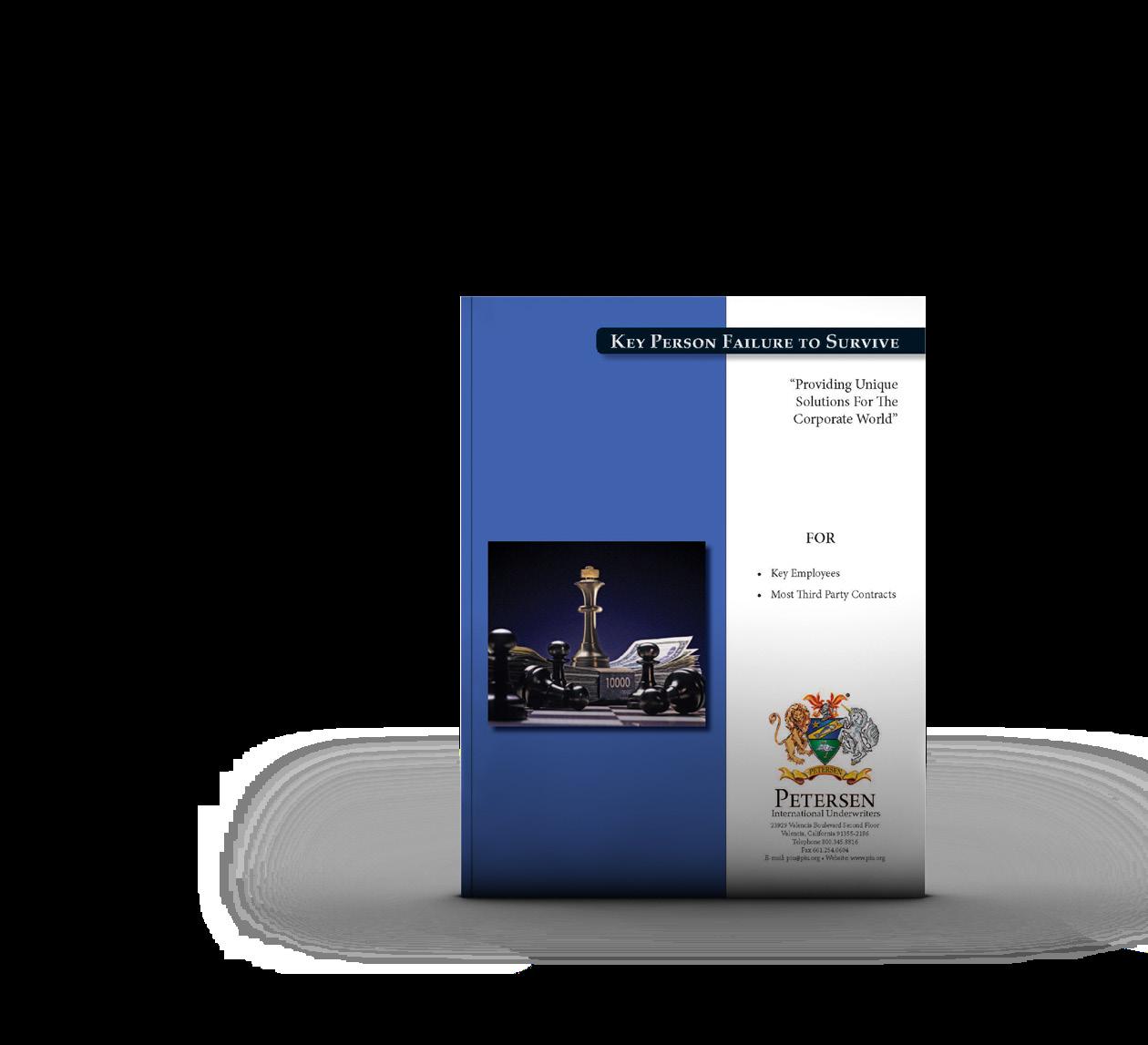Tax policy is changing, Social Security is going up and proposed legislation would help Americans save much more for retirement.
Many of these policy changes can be traced to one overarching concern: INFLATION.



MDRT’s

Tax policy is changing, Social Security is going up and proposed legislation would help Americans save much more for retirement.
Many of these policy changes can be traced to one overarching concern: INFLATION.



MDRT’s
Discover stats, approaches and tools that insurance and financial advisors need to stay at the forefront of what matters to today’s consumers.

Plus, see where you stand from a client’s perspective, and find out how the financial advisors of today are connecting with their clients better than ever.
Go to PAGE 5 to get a peek at some of the results of this survey, including:
• What tool 75% of Americans say is extremely important for their advisor to use
• Technology 65% of Gen X advisors use that’s likely to become a mainstream medium
• How to get access to ALL the original research from MDRT’s survey
• Insights on topics that could affect how you do business in 2023
MDRT is a preeminent global association with a rich 95-year history of setting the highest standards when it comes to ethics, knowledge, service and productivity. The esteemed members of MDRT are committed to aiming higher and achieving more.
Let the mentorship of the world’s leading life insurance and financial services professionals and the industry’s most robust collection of resources inside MDRT help you capitalize on trends you’ll discover in the infographic to anticipate your clients’ needs and better serve them.
By joining MDRT, you’ll learn how to improve productivity and run your business more efficiently as well as be inspired to reach the next level of professional success.
See what’s most important to consumers and clients today. GET A PEEK AT EYE-OPENING STATS ON PAGE 5!
Grab your copy of the MDRT Fintech and Advisor Survey and discover how it can help you grow your business.
At MassMutual Ascend, we go above and beyond for your customers. By providing transparent annuity products and putting service above all else, we make the impossible feel possible and pave the way for brighter financial futures.

Take your customers to the future they want.
MassMutualAscend.com
Products issued by MassMutual Ascend Life Insurance Company (Cincinnati, OH), a wholly owned subsidiary of Massachusetts Mutual Life Insurance Company (MassMutual).
© 2022 MassMutual Ascend Life Insurance Company, Cincinnati, OH 45202. All rights reserved. MassMutualAscend.com
Bryon Holz believes an advisor’s passion should be his brand. Read more about what the incoming president of the National Association of Insurance and Financial Advisors has to say about the association and his views on the industry in this interview with Publisher Paul Feldman. IN THE FIELD
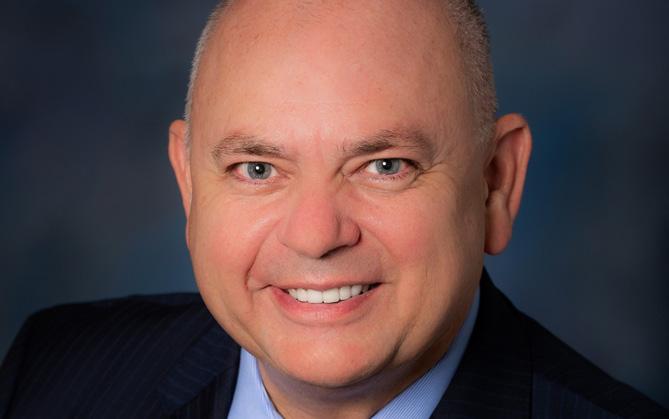 By Susan
By John Hilton
By Susan
By John Hilton
30 Annuities cast a light when things seem dim
ByJim Poolman
Rising interest rates may sound like music to the ears of investors who are debating whether to add an annuity to their retirement portfolios.

34 Help clients understand rising long-term care costs
ByKen Latus

Discuss what is needed practically and financially to avoid unexpected burdens.
38 What millennials need to know about Social Security
By Ron Mastrogiovanni
It’s not too early for younger clients to begin thinking about how their future benefits will impact their retirement.
40 Finding success with center-ofinfluence marketing
By Ayo Mseka
Patience is the key to forming good alliances. IN
KNOW 42 The increasing demands for standards of care in the sale of life insurance.
By Richard M. Weber
What’s next in the general evolution of insurance products? Back to the basics!
e-mail editor@insurancenewsnet.com or call 717.441.9357, ext. 117. Advertising Inquiries: To access InsuranceNewsNet Magazine’s online media kit, go to www.innmediakit.com or call 717.441.9357, Ext. 125, for a sales representative. Postmaster: Send address changes to InsuranceNewsNet Magazine, 150 Corporate Center Drive, Suite 200, Camp Hill, PA 17011. Please allow four weeks for completion of changes. Legal Disclaimer: This publication contains general financial information. It should not be relied upon as a substitute for professional financial or legal advice. We make every effort to offer accurate information, but errors may occur due to the nature of the subject matter and our interpretation of any laws and regulations involved. We provide this information as is, without warranties of any kind, either express or implied. InsuranceNewsNet shall not be liable regardless of the cause or duration for any errors, inaccuracies, omissions or other defects in, or untimeliness or inauthenticity of, the information published herein. Address Corrections: Update your address at insurancenewsnetmagazine.com
The Federal Reserve Bank of New York recently analyzed data from the American Time Use Survey and found that, as a country, we are saving a combined 60 million hours of per day of commuting time by working from home. The COVID-19 pandemic dramatically changed how Americans are spending their time, including where and how we work. Recent statistics show that about 15% of full-time employees are working from home full time while about 30% are working in hybrid situations.
So, what do these statistics mean to agents and financial advisors? More time. More time to meet with clients. More time to prospect. More time to keep up with training and understanding the many new products arriving on the scene.
In a recent conversation with InsuranceNewsNet, industry icon Harry Hoopis pointed to this silver lining of having more time to meet with clients as one of the most important changes for the business in recent years. Harry — with an amazing career at Northwestern Mutual hiring and managing a large and success ful workforce — believes maximizing meetings with clients is one of the essen tial components of success for agents and financial advisors.
This is not the first time we’ve heard this. And we’re hearing it more and more often. Many advisors and agents have be gun to realize that:
1. Many Americans — including older Americans — use video conferencing software frequently and have become more comfortable doing so.
2. The amount of time spent not driving to meet clients can be directly translated into additional meetings.

3. Some of those additional hours of found time are also useful for increasing pros pecting and training.
Many advisors have begun to shift their schedules online to maximize their appointments. More available hours also
translate into providing more time slots for clients, making it easier for a client to fit a meeting into their tight schedule. Combining a more flexible schedule with superefficient online scheduling apps like Calendly allows clients to easily and quickly find and sign up for an open meet ing slot without phone calls or emails or using advisor or staff time. This ensures that the advisor’s meeting schedule is maximized by removing scheduling bot tlenecks and inefficient use of time, in creasing their prospects of success.
As we approach the new year, there have been increasing calls for the insurance industry to “reset the narrative.” This is something we’ve heard from industry observers and analysts through the course of the year.
For example, Karl Hersch, Deloitte’s U.S. insurance leader, described the in dustry as being at a post-pandemic inflec tion point that marked a time for change — and resetting the narrative. Specifically, he pointed to increasing investments in technology, building industry talent and focusing on culture.
Hersch reminded us of what the in dustry does for “all the other industries out there.” Without the insurance indus try, he said, there’s no rebuilding of bro ken buildings, there are no cruise ships floating on the ocean, and there are no human beings driving cars. None of that is possible without insurance supporting those industries.
This provides a powerful way to look at the industry in a new or refreshed light. And maybe it provides a powerful frame work for attracting new talent.
The need to attract new talent — the best talent — is widely seen as a major goal for the industry. That talent is need ed to provide the innovation required for the industry’s future success, especially after workforces have been buffeted by the great resignation and the great retirement.
Insurers are working to reinvent the workplace in order to attract new tal ent. Part of that objective is focusing on the workplace culture, especially when it comes to increasing diversity and creating a remote/hybrid work environment that has become the norm for about half the work ing population following the pandemic.
Technological innovation also is key to improving the consumer experience, help ing provide products and services with the speed and efficiency that we’ve become accustomed to in our dealings with most industries.
Committing to address the talent gap, enable technological advancement, and enhance workplace culture and diversity are the goals the industry must priori tize. Resetting the narrative to spotlight the great importance of the industry and the opportunities that lay ahead as these goals are achieved will help ensure future success.
John Forcucci Editor-in-chiefHoo boy, glad I'm not stuck in traffic!
Lock in a guaranteed 7.20% interest rate on the income base for up to 10 years with the fixed rate Lifetime Income Rider.1



Cater to your client’s specific needs with a variety of crediting strategies and indices to choose from.


Accumulate in the annuity on a tax-deferred basis, interest credited will not be taxed until it is removed from the annuity.
1) Lifetime Income Rider index credit is calculated differently than base contract indexed strategies and does not impact the base contract’s Annuity Value. There are fees for these riders. Any excess withdrawals will decrease the income base and will require the income payment to be recalculated, resulting in lower income payments. A full surrender will terminate the contract and lifetime income rider payments. You may not take a partial or excess withdrawal that would result in an annuity value of $2,000 or less. ASIA PLUS Surrender Charge Schedules: 7 year: 7%, 6%, 5%, 4%, 3%, 2%, 1%, 0%; 10 year: 10%, 9%, 8%, 7%, 6%, 5%, 4%, 3%, 2%, 1%, 0%; California 9 year: 9%, 8%, 7%, 6%, 5%, 4%, 3%, 2%, 1%, 0%. A Market Value Adjustment may apply. Waivers are not available in all states. Form Series FPIA19; LIR19 (Forms may vary by state, Idaho forms ICC19 Form FPIA19 and ICC19 Form LIR19). The contract and riders may not be available in all states. See Policy for details and limitations. American National Insurance Company, Galveston, Texas.
[Editor’s Note: These are some of the major stories to which we are devoting ongoing coverage on InsuranceNewsNet.com.]


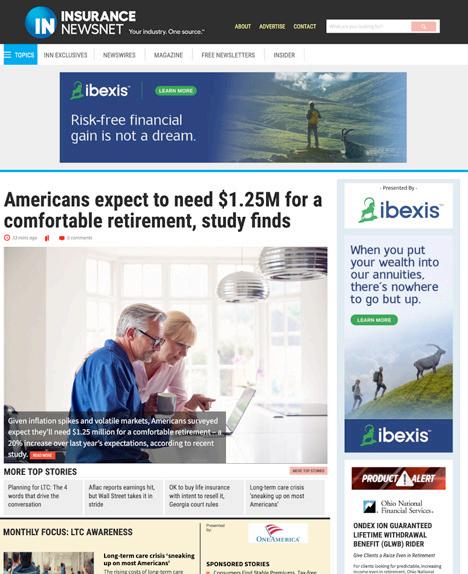

Planning for retirement has never been more challenging than it is today. With inflation at a 40-year high, talk of reces sion and workers facing a retirement that could last more than 30 years, the ques tion is: Does the 4% rule still make sense?
A panel of financial experts discussed the challenges of retirement planning today and whether those challenges have made the 4% rule obsolete. David Lau, founder and CEO of DPL Financial Partners, teamed up with David Blanchett, adjunct professor of wealth management at The American College, for a webinar that looked at the 4% rule in today’s planning environment.
The 4% rule is a rule of thumb that suggests retirees can safely withdraw the amount equal to 4% of their savings during the year they retire and then ad just for inflation each subsequent year for 30 years. But the panelists said that tra ditionally “safe withdrawal” rule doesn’t necessarily work in today’s environment.
“There is no way to describe how awful this year has been” in looking at the per formance of various asset classes through
the third quarter of 2022, Blanchett said.
He noted that bonds can no longer provide reliable income as they once did. In addition, retiring in a down market can derail a retirement plan, putting a retiree at risk of depleting their portfo lio while still needing income. Anxiety about running out of money during re tirement can lead retirees to underspend their retirement savings.
Read the full story online: bit.ly/4percent2022
Susan Rupe is managing editor for InsuranceNewsNet. She formerly served as communications director for an insurance agents’ association and was an award-win ning newspaper reporter and editor. Contact her at Susan.Rupe@innfeedback.com. Follow her on Twitter @INNsusan.
profit goals elusive. Investors prefer that insurers sell off lines that lag behind in profitability.
One of the historic problems with selling off a piece of an insurance com pany is that it requires every policy holder’s signature.
by John HiltonInsurance deals are set to rise dramat ically, according to the 2022 Global Insurance Run-Off Survey released last month by PwC.
Ninety-seven percent of respondents predict similar or greater levels of deal activity in North America going forward, the survey found. PwC projects the glob al non-life run-off market at $960 billion, up from $790 billion in 2019.
“I think we will see deal numbers rise and much larger deals being done, espe cially in the U.S.,” said Andrew Ward, partner, liability restructuring, PwC UK.

Insurance business transfer deals represent one path to getting a deal done, but states have been slow to adopt the corresponding laws to make those deals possible.
The insurance industry has strug gled for decades with how to handle discontinued blocks of business. The Association of Insurance & Reinsurance Run-Off Companies (AIRROC) formed in 2004 to give insurers a forum for ad dressing the issues.
Insurers are especially keen these days to move on from old books of business, as ultralow interest rates continue to make
Nevertheless, the appetite for deals re mains high, Carolyn Fahey, executive di rector of AIRROC, said in the PwC report.
“The legacy sector is creative and vi brant,” she said. “There are appetites for every type of deal size and tools that can work for any situation.”
Read the full story online: bit.ly/transferlaws2022
InsuranceNewsNet Senior Editor John Hilton has covered business and other beats in more than 20 years of daily journalism. John may be reached at john.hilton@innfeedback.com. Follow him on Twitter @INNJohnH.
Figuring out whether the 4% rule still makes sense and why states are slow to adopt business transfer laws.
MDRT’s 29 Essential Facts
To Know
Personal interaction is one of many reasons clients choose to work with a human advisor instead of a roboadvisor. And while they may not want to put their entire financial life in the hands of a bot, that doesn’t mean they don’t expect human advisors to use technology. In fact, responses from the MDRT Fintech and Advisor Survey found it’s highly important that advisors do so.
Follow along as we demystify advisors’ fintech usage according to clients, as well as advisors’ reported use of technology.
Consider this your guide to understanding and exceeding your clients’ expectations.
In their recent survey, MDRT discovered clients’ tech expectations. Additionally, the survey explored the gap between those expectations and what clients believe their advisor uses.

51% of Americans say it’s extremely or very import ant for human advisors to use tools like email, social media, instant messaging, webinars and videos to increase communication.
Only 35% of clients report their advisor doing so.
75% of Americans say it’s either extremely important or very important for human advi sors to use cybersecurity tools like password managers or two-factor authentication (2FA). Only 35% of human advisors’ cli ents report that their advisor uses such tools.
As technology becomes more of a requirement for doing business today, MDRT, along with other professional organizations, urges members to adopt fintech in their practice. Whether it’s something as simple as an online appointment scheduler or as complex as artificial intelligence, these technology solutions help automate some of your daily work so you can spend your time on higher-value tasks.

54% of survey respondents stated they use social media like Facebook or LinkedIn to communicate with their clients.
• 65% of Generation X advisors.
• 60% of millennial and Generation Z advisors.
• 27% of baby boomer advisors.
52% of survey respondents reported using an email or e-newsletter program, to communicate with their clients.
• 63% of Generation X advisors.
• 52% of millennial and Generation Z advisors.
• 35% of baby boomer advisors.
• Advisors of color (63%).
• White advisors (49%).
44% of survey respondents indicated they communicate with clients using instant messaging platforms like WhatsApp or Telegram.
• Generation X (56%).
• Millennials and Generation Z (42%).
• Baby boomers (27%).
This is just a glimpse of what you'll find in the full report! To download a wealth of additional insights from MDRT’s latest research, visit www.2022MDRTreport.com
55% of Americans find usage of fi nancial modeling software extremely or very important.
51% of clients report their human advisor uses this technology.
44% of Americans find that online schedulers are extremely or very important.
40% of clients say their human advi sor uses such platforms.
42% of Americans say the use of platforms like Zoom or Microsoft Teams for hosting virtual meetings is extremely or very important.
22% of survey respondents stated they use a password man ager, like LastPass or 1Password.
• 30% of Generation X advisors.
• 23% of millennial and Generation Z advisors.
• 11% of baby boomer advisors.
• Male advisors (27%) were also more likely than female advisors (14%) to use password managers.
Why NAIFA President-elect Bryon Holz believes NAIFA’s role is more important than ever, and every advisor’s passion should be their brand.

Bryon Holz built a long and substantial career providing investments and insurance to successful individuals and business owners throughout the Southeast.
Although he had a humble start in the business, he eventually earned life mem bership in Million Dollar Round Table. Today, he regularly speaks to audiences around the country — and around the world — while continuing to lead his prac tice, Bryon Holz & Associates of Brandon, Fla., which he founded in 1983. In 2023, he will take on a new role — president of the National Association of Insurance and Financial Advisors.
His speaking engagements most recent ly have taken him to Australia. “Wherever I travel in any state or any country or place I go, I always find something amaz ing to enjoy and appreciate wherever that is, whether it’s a house of worship or it’s a vineyard or a winery or whatever it is,” he said. “I think that some describe that as a sense of wonder, as almost a childlike sense of wonder. But I think that if we nev er lose that, then life is full of great things to enjoy and appreciate.”
A graduate and presidential scholar of the University of Tampa, he finds his pro fessional education never ends, and he has obtained numerous designations and cer tifications over the years. Holz is known for his love of music — his Twitter handle is @BryonHolzROCKS — and is also an avid photographer who shares his hobby through his social media. “I don’t know how many guitars I have, but it’s one of my problems. I have a lot of friends in music, and it’s certainly something I love.”
As Holz prepares to take on the leader ship of NAIFA, he shares his thoughts both about the role and the future of the orga nization, as well as the success he has had, while offering lessons and advice learned over the course of his career.
Paul Feldman: You have had such an incredible career in the insurance indus try, nearly 40 years. How did you get in the industry?
Bryon Holz: It was pretty much by acci dent. I kind of fell into it. My family moved out from the Chicago suburbs in the ear ly ’70s, when I was still in middle school. We moved from a large metropolitan
area into a relatively rural area in West Central Florida. There wasn’t a lot to do, so I became very involved in extracurric ular activities at school. One of the indi viduals I got close to was my high school biology teacher. He started working with teachers and educators while I was still in high school, helping them with 403(b) s, tax-sheltered annuities and retirement planning. He did so well that soon he quit teaching and did that fulltime.
I always did well in school, and I was the first one in my family to go to college. I had a full scholarship — a presidential schol arship — to the University of Tampa as a business student. I knew I wanted to work in business. At my college graduation, my former high school biology teacher asked me what I was going to do, and I really didn’t know. There was a recession going on. He said, “Why don’t you come work with me until you get your real job?” Now, 39 years later, I’m still looking for a real job.
We started working with educators back then and, of course, did a lot with 403(b)s and retirement. But we quickly went to other areas of life insurance, mutual funds and retirement planning. For the last 39 years, most of my focus has been on re tirement planning. I always think of the NAIFA logo, which is the symbol of help ing our clients should they live too long, die too soon, or become too sick or hurt to work. Holistic financial planning and risk management are what I’ve done through out all these years.
Feldman: You’ll be assuming the presidency of NAIFA next year. How did you get involved with NAIFA, and where do you see yourself taking the association?
Holz: I had a mentor early in my career who invited me to attend a local NAIFA meeting, saying, “If you’re going to be a professional, you need to be a member.” So I became a member. I quickly found out the importance of affiliating with fellow professionals — we were in competition, but we supported each other and really lifted each other. All of my best sales ideas, all of my best practice management ideas, have come from others.
NAIFA has always been important to me throughout the years, whether it’s on the local level, state level or, of course, on the national level. Any time I get togeth er with NAIFA friends, I always learn
something. Whenever I speak — and I’ve been all around this country, speaking and sharing with NAIFA members and fellow professionals — I always get something out of that. There’s that synergy, and that’s so strong with the National Association of Insurance and Financial Advisors.

Feldman: As a practicing advisor, you’ve had agents who have entered your practice. How do you integrate them into the system, nurture them and help them grow?
Holz: One of the greatest challenges of our profession right now is replenishing our selves, filling up the bench. Where are the new professionals coming from? There are two sides to this. On one side are identifying and encouraging them and bringing them into the profession. Some years ago, my firm had intern programs for educators, for college students and for people from other professions who wanted to try a new profes sion. Those are pretty much gone now.
The traditional agency system is not what it used to be. NAIFA, for example, has a future leaders program that we’ve de veloped in various colleges and universities around the country. We need to reach into our communities and work with Women in Insurance and Financial Services, the National African American Insurance Association, and the Latin American Association of Insurance Agencies, and make sure that we’re growing NAIFA’s Young Advisor Team.
While on the one side we need individu als who can come into the industry, on the other side is the advocacy role of NAIFA — regulation, Congress and legislatures across all 50 states to make sure that we can continue to serve Middle America. Unfortunately, our profession has been reg ulated in so many ways that we’re almost at risk of not being able to serve the majority of clients. It’s getting to the point where if you don’t have a quarter of a million dollars in investable assets, no one wants to talk to you or no one can talk to you because of the way things are being regulated.
I think that’s a significant challenge. It’s hard to get someone in the business to hit the ground running if they have to hit such large goals and targets to stay in business. The great news is that when we are able to sit down with our regulators, members of Congress and legislators in all
50 states, as only NAIFA can, they recog nize what we do helps all of society. What we do as professionals is the solution, it’s not the problem.

Advocacy is one of the things that makes NAIFA not only so strong and im portant but makes serving with them so important.

Feldman: Let’s talk about your busi ness. You have talked about offering sensational client service, and I think that’s important for our industry. It’s a good message. Can you tell us a little about that?
Holz: Several years ago, I realized that we’re educators. We primarily depend upon the effectiveness of our communication with our clients and prospects to be able to serve them. How successful we are depends upon how well we can communicate and motivate our clients to take action to solve the challenges that may be present in their lives. I learned years ago that in order to strengthen your message, it’s best to appeal to as many senses as possible, whether it’s sight, sound, taste, touch, smell.
I started with some simple things that I learned from mentors — a stick of chew ing gum in birthday cards to our clients

I have a great passion for music. That’s a great way to brand myself and our practic es. That’s a great way to involve and engage more senses.
Feldman: You also do wine tastings. How do you generate business through wine tasting?
Holz: Well again, that’s all about the senses. It’s just a chance to enjoy and celebrate. We don’t sell anything through these events, but we do try to talk about how different vintages are better from different places in different areas and different regions. It’s the same thing with asset allocation.
Some years bonds might do well, some years international stocks or domestic blue-chip stocks might do well. It’s the same with wine. We have that story to tell, but at the end of the day, it’s just an op portunity to connect with our clients and prospects — and introduce ourselves and invite their referrals to do business with us as well.
Feldman: Let’s talk more about this. Let’s say someone wants to host a wine tasting for their practice. How do you do that? What does your format look like? How do you market it?
wine region’s going to produce the best grapes or the best wine. And that it’s the same thing with investments — there are ups and downs. I don’t do the presentation about the wine. I leave that to professionals.
We have a wine shop nearby and they have a great classroom, and we’ve used that several times. We have a winery and a vine yard that we’ve used as well. I don’t personal ly talk about the wines, and I try not to even talk about the message as well. I usually try and bring a product sponsor, a partner, in and talk about that message as well.
My goal, my role is to be the ambassador. It’s to be the relationship builder. I don’t pick stocks for my clients. I don’t pick is sues for my clients. My goal is to help them find out where they need to be and connect them with the products and services that best meet their needs. It’s the same way with these wine tastings. I wouldn’t do well leading it personally — especially after the third glass or third tasting!
Feldman: I want to come back to regulation. What do you see as the most significant regulation issues that agents should be concerned with and support ing NAIFA on?
Holz: Right now, there are really two pri mary issues that I see. The first one is that agents and reps are able to serve Middle America — that regulation doesn’t price out Middle America, middle-income con sumers and others. We all need an advisor. That’s our greatest challenge.
and their children, for example. We host ice cream socials. We do intergeneration al marketing to all of our clients to bring their children, their grandchildren, their great-grandchildren, their parents, their grandparents — and anything that we do clientwise, we always try and get as many senses involved as possible.
Holz: We’ll invite clients who we know enjoy wine, and we’ll invite them to bring a friend. The main thing we’ll use it for is to introduce referrals to our practice and to help our existing clients feel good about what we do — especially now with the vola tility in the market. And it allows us to reit erate the message that every year a certain
Our second one is being able to serve as an independent advisor. I think that’s a serious issue that’s coming up in a lot of different states and one we need to be aware of so that they can continue to be independent to provide that service. We’re concerned about duty of care, of course. The SECURE Act, saving our seniors. Being able to use annuities in retirement planning is really important. Seeing the agent and the rep as the enemy first is an issue that we’re vigilant on. NAIFA has ad vocated for agents, making sure that we’re able to do our job and help people. That’s the most important thing we’re doing right now — and we’ve done it for more than a century.
Feldman: What are some things agents should be doing right now that they’re not doing? What advice and tips can
you give to agents to help them be more successful?
Holz: First, they should join NAIFA. Right now, I think it’s important for them to align themselves with resources that can support them in their practice, resources like NAIFA’s centers of excellence and our Advanced Practice Center, Limited and Extended Care Center, and finding plac es that can truly help them with the best thought leaders in the industry. I think that in the last few years, especially with COVID-19, they don’t realize that these resources exist.
I think the most important thing for our reps is to recognize that we’re stronger to gether — we need each other.
So many of us are working with our cli ents virtually and through the phone and through email and online. That’s great, but what we need to also keep in mind is that nothing replaces the role of the agent. We have indications that might suggest the con trary, like automatic sign-ups for 401(k)s, but no one’s going to take care of them as well as an advisor can.
We need to make sure that we’re posi tioning ourselves in our communities to truly be the trusted advisor. Unfortunately, there’s a lot of division right now in our country and in the world. “They” are the enemy. It’s us against them. That saddens me so much. What we do at NAIFA is pur ple. It’s not red, it’s not blue.
Our clients and our fellow citizens, our communities, they’re sick from this. They’ve got shell shock from all of this. They need professionals who can be the voice of reason. The more we recognize that as agents and reps and members, I think the better we’re going to be.
Feldman: As an advisor, how do you deal with somebody whose beliefs may be so different from yours? How do you manage that?
Holz: My faith is very important to me, of course, and my family. I always try and see it from the individual’s point of view and perspective. Even if we may not agree on something, I still see that they need help. I see where they’re going, and I recognize the need for them to get there. I help them to get there. I always try to have empathy. What can I do to make things better?
Feldman: One of the things you de scribed earlier was that some of your best ideas come from others. What are some of the best tips and advice that you can share with our readers?

Holz: Virtual client service. Working with our clients virtually rather than in person in advance of the pandemic, which has been huge. I thought you had to be at their kitchen table or they had to be in my office. That’s been a game changer for me.
Also, hire a scheduler. Your time is your most valuable asset as an advisor. I started having someone schedule my time about four or five years ago, and it has been a game changer for our practice. We have more meetings with our clients. We’re more in touch with them. We do more for them. We’ve been more successful. Our production has increased.
Another thing I’d emphasize is story telling, which is so important in what we do as well. We’ve developed several stories. They’re not our own, of course. We’ve sto len them. For example, the story about the young man who saved the princess’s life. The young man saves the life of the prin cess, and the king is so grateful for saving his daughter’s life that he offers to give the young man a million-dollar reward. The young man, being a smart young man says, “Instead of the million dollars, why not just give me a grain of rice, doubled each day for a month?” The king thinks, “Sure, I’ll give him the rice.” But he didn’t realize that at the end of the month, the young man would end up with the entire kingdom’s rice production. That tells the story about the power of compound interest. Stories are great to use in our practice. People can remember and identify with them.
I think the most important thing I’ve learned as a professional is to be in touch with your clients — to touch them regular ly, to send out the emails, to send out the snail mail, to have events, do the birthday cards to everyone in the household — to just reach out and touch them regularly. Don’t be afraid to reach out when times are tough like they are now with the economy and with the markets.

We are very active in social media, and we really have a very well-planned-out ap proach and calendar to our social media program. We make sure that we have days in the week when we do fun things that align with our brand. Whether it’s about
rock stars — in my case, classic rock, be cause we target baby boomers — you need to mix it up. We’re very careful to do that, and it’s very calculated, and we found great success in our response to it. Has it gotten business for us? I know it has.
Another thing is our branding. Everyone who’s in our business, every rep, every agent, can brand themselves. I use music as my brand. If you’re a golfer, you can brand yourself with golf. Brand yourself and you’ll have a stronger identity with your clients and prospects, and it makes a difference.
Feldman: How would you recommend somebody create their own brand? How do you really drive brand?
Holz: Once you identify what your pas sion is, you can share that with others and others can relate to it. If it’s cooking, hold cooking classes at the local kitchens. Just make sure that you’re open to all the differ ent ways that you can share those passions with your clients. Don’t think “Well, this will be corny.” Go all in and make sure that you have fun doing it.
If it’s authentic and it’s truly you, that’s what it’s all about. I think that’s the most freeing thing that I’ve done in my profes sion, is recognize what I am and who I am and what I like. In my case, it’s music. Then just be open and free about it, and people will say, “Yeah, that’s Bryon. He’s the music guy, but he’s also a financial advisor.” Dig deep, open up and go for it.
Feldman: What is NAIFA doing to make sure it remains relevant?
Holz: In addition to advocating for our members, NAIFA is partnering with more companies than ever before. So not un like how advisors may brand themselves, NAIFA is branding ourselves in ways that we can attract and serve more advisors and agents than ever before. I think that’s really important.
What is insurance? It’s taking a small amount of something and putting it togeth er with something much larger to manage that risk. Well, that defines NAIFA — tak ing one person at a time, adding them into something bigger to strengthen who we are and what we do as professionals. That’s why I’m so excited and humbled to be the incom ing NAIFA president, to be a part of that.
The Fed’s aim is to slow the economy, and a recent Nationwide Agency Forward survey showed that small businesses are already feeling it. The poll showed that 70% of small-business owners expect a recession in the next six months. But most owners are not prepared for it, with only 37% saying they are ready to ride out a recession, the same percentage of consumers who say they are prepared.
Inflation is the business owners’ top concern (61%), while supply chain dis ruptions still are vexing businesses, with 41% saying they are a problem. The third top concern, at 35%, was rising interest rates.
Only 42% of business owners said that business conditions were good, and 9% said they were excellent; 34% said conditions were fair, and 14% said they were poor. Four in 10 owners (39%) said revenue dropped somewhat or a lot over the past six months, with only 3% saying it increased a lot; only 34% expect an increase of any kind in the next six months.
The survey showed that small-business owners have been responding to the slowing already, with 58% having looked for ways to reduce expenses in the past months and another 24% looking to do so in the next six months. They have already dipped into their own savings, with 38% saying they have done so and another 16% expecting to dip into their own money.
There is light at the end of the infla tion tunnel, said Mark Zandi of Moody’s Analytics, who predicted U.S. inflation will be cut in half within six months. Zandi’s prediction hinged on several fac tors, though, including oil prices staying at current levels, supply chain problems let ting up and vehicle prices coming down. Overall, Zandi believes the Federal Reserve’s policy tightening is put ting the economy on the right track. He predicts high prices should re cede enough to prevent a recession.
He expects the Fed to pause hikes around the 4.5% or 4.75% level this winter.
Thanks to the increase in online banking and the COVID-19 pandemic, the num ber of Americans who are “unbanked” hit a new low in 2021.
A new report from the Federal Deposit Insurance Corp. found that 4.5% of Americans — representing approximately 5.9 million households — were without a bank account in 2021. That’s the lowest level since the FDIC started tracking the data in 2009 and down from 5.4% of Americans in the 2019 survey data. What did the pan demic have to do with the increase in bank ac counts? States and the federal gov ernment distributed trillions of dollars in stimulus to Americans
after COVID-19 shut down the U.S. economy in March 2020. The benefit programs largely required that recipients have a bank account in order to send the funds quickly to those impacted. During that time, consumers opened bank ac counts to access these funds quickly and securely, the FDIC said.


Let the buyer beware when it comes to bitcoin trad ing. More than half of the reported trading volume on 157 cryp to exchange sites is misrepresented or fake, according to a study pub lished in Forbes magazine.
Forbes estimated the global daily bitcoin volume for the industry was $128 billion on June 14. That is 51% less than the $262 billion one would get by taking the sum of self-reported volume from multiple sources, the study said.
The study said the biggest problems come from a lack of regulation, noting that the least regulated exchanges account for $89 billion of bitcoin volume while claim ing to make $217 billion. Experts point to wash trading, the act of selling an asset to yourself in an attempt to inflate the value of that asset, as the reason for the discrep ancy in value.

With interest rate hikes, a lag effect on prices can take six to 12 months.
Helping your clients choose their Medicare supplement carrier is one of the most important things you do. That means picking the right carrier the first time. Since plans are standardized, how can carriers differentiate themselves to customers? While price matters, so does peace of mind.
As the nation’s number two carrier for Medicare supplement, Mutual of Omaha offers:
• Confidence. We’ve been in the market for more than 55 years and, as a carrier with a national presence, we hold more than 1.4 million policies in force. Clients can rest easy with us.
• Outstanding service. For you, this means direct access to underwriters and a dedicated sales support staff. For clients, we deliver on our promise to pay, anniversary rating, competitive rates and up to a 12% household discount.
• Brand awareness. Our recognized name among Medicare-eligible clients means your customers know us. You don’t have to sell us.
For producer use only. Not for use with the general public.
Plans that make a difference!
• Check out our competitive prices and savings on Plan N
• High-Deductible Plan G available
This rating is the 2nd highest of 16.*
A.M. BEST
This rating is the 5th highest of 21.*
MOODY’S INVESTORS SERVICE
Strong
This rating is the 5th highest of 21.*
S&P GLOBAL
*as of 10/1/22
For clients who are looking to make the right Medicare supplement decision, look no further than Mutual of Omaha.
Contact your marketer or visit mutualofomaha.com/ sales-professionals.

Tax policy is changing, Social Security is going up and proposed legislation would help Americans save much more for retirement.
Many of these policy changes can be traced to one overarching concern: inflation.


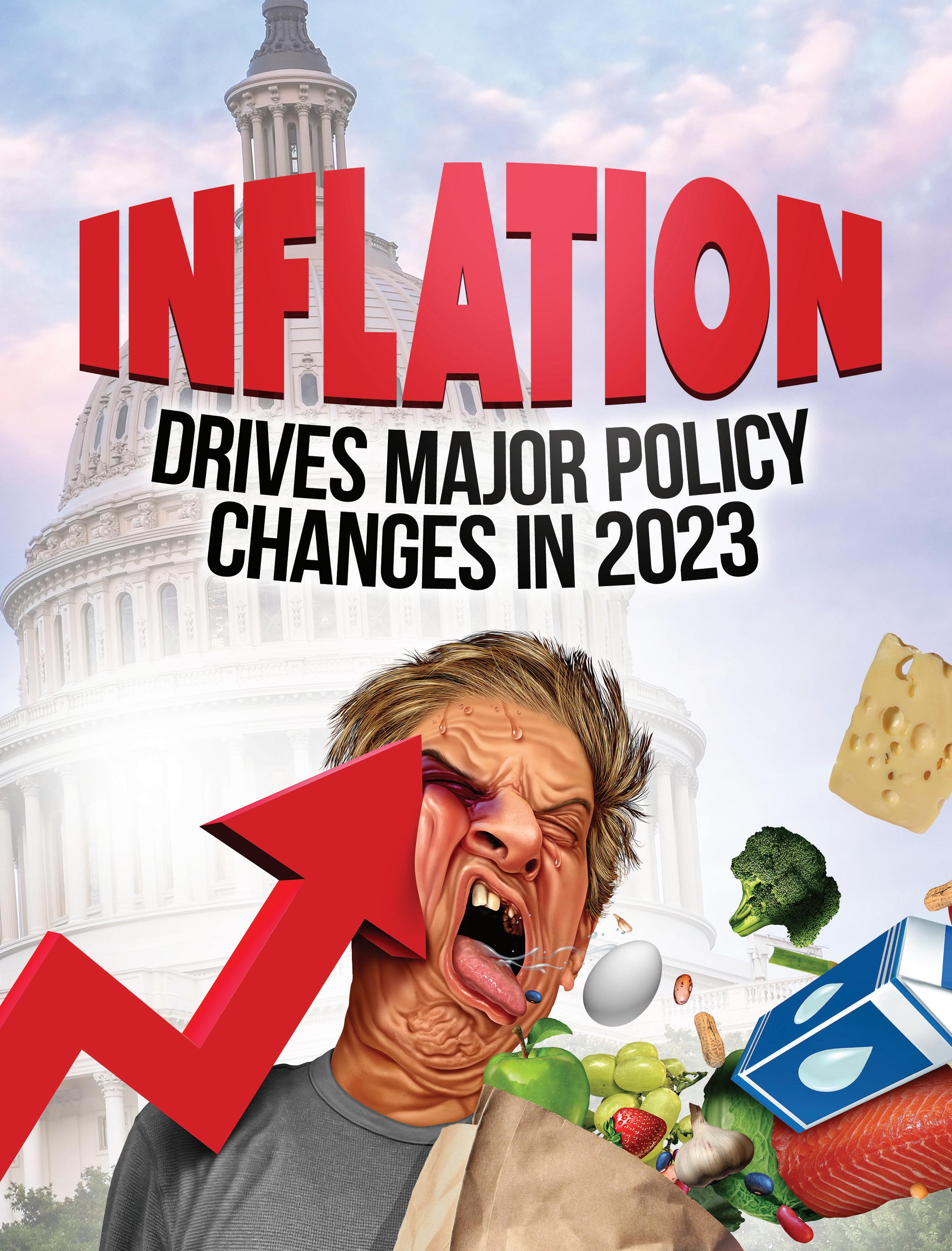 BY JOHN HILTON
BY JOHN HILTON
The headlines on 2023 tax and retirement policy changes are not quite as big as President Joe Biden had hoped, but one issue — inflation — is is driving significant developments that advi sors will want to address with clients.
It’s not all bad news, either.
Inflation proved stubborn throughout 2022, despite the Federal Reserve’s best efforts. The year is ending with inflation affecting nearly all aspects of the U.S. economy.
The Fed hiked interest rates five times in 2022 and was expected to push through a sixth increase in November. A year that began with the fed funds rate at 0.25% to 0.50% will end with the rate at 3% to 3.25%.
The inflation fallout is being felt across all age groups and has massive ramifica tions for retirement planning.

While the rate hikes might succeed in bringing inflation back to the Fed’s 2% target, it might also cool the jobs mar ket. The unemployment rate could rise as high as 6% next year, according to a recent Deutsche Bank forecast.
Likewise, rate hikes could throw the economy into a recession in 2023, say executives such as Goldman Sachs CEO David Solomon and JPMorgan Chase Copresident Daniel Pinto.
Although that news is certainly bad for clients, they are getting some correspond ing good news in the form of inflationary adjustments to both tax filing rules and Social Security.
“Starting in January, average Social Security benefits will rise by more than $140 a month,” said Lyle Solomon, principal attorney at Oak View Law Group in Auburn, Calif. “Social Security payouts will increase, while Medicare premiums will decrease, giving seniors more breathing room and peace of mind.”
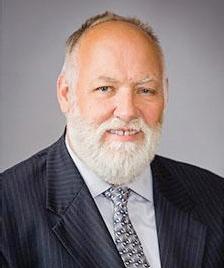
Social Security and Supplemental Security Income benefits for approximately 70 million Americans will increase 8.7% in 2023 in a historic cost-of-living adjustment.
But that is far from the only change on the way in 2023.
While Biden did not get many of the tax code changes he campaigned on — thanks to a sharply divided Congress — there is still plenty new to review with clients.
For starters, in October, the IRS un veiled higher federal income tax brackets and standard deduc tions for 2023. The agency also boosted the income thresholds for each bracket, with the new limits apply ing to 2023 for tax returns filed in 2024.
“We’re seeing a much larger increase in the standard deduction than was originally forecast,” said Rob Burnette, CEO, finan cial advisor and professional tax preparer at Outlook Financial Center in Troy, Ohio. “We’re going to see deductions change. For example, the gift tax exclusion projected to be $15,000 is going to be $16,000. That
qualifying taxpayers who have three or more qualifying children, up from $6,935 for tax year 2022.
» For tax year 2023, the monthly limitation for the qualified transportation fringe benefit and the monthly limitation for qualified parking increases to $300, up $20 from the limit for 2022.
» For the taxable years beginning in 2023, the dollar limitation for employee salary reductions for contributions to health flexible spending arrangements in creases to $3,050. For cafeteria plans that permit the carryover of unused amounts, the maximum carryover amount is $610, an increase of $40.

Another tax change — the sunset of the expanded child tax credit — could be saved by Congress in its December “lameduck” session. The credit was significantly
2022 2023
means you can give $16,000 to someone and not have to pay gift tax because whoever re ceives it doesn’t pay any income tax on it.”
Some other important tax filing changes announced by the IRS include:
» The alternative minimum tax exemption amount for tax year 2023 is $81,300 and begins to phase out at $578,150 (for married couples filing jointly, $126,500, and phasing out at $1,156,300). The 2022 ex emption amount was $75,900 and phasing out at $539,900 ($118,100 and $1,079,800, respectively, for married couples).
» The tax year 2023 maximum earned income tax credit amount is $7,430 for
expanded in 2021 by the American Rescue Plan so families could receive up to $3,600 per child under 6 and $3,000 for those ages 6 to 17. But the changes were made for just one year and will be reduced back to $2,000 per child in 2023 unless Congress acts.
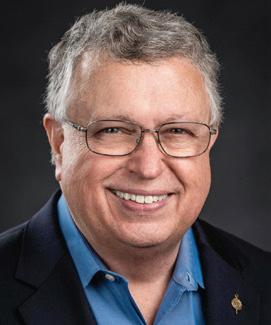
“I don’t know if there’s a lot of partisan pushback from Republicans on a child tax credit,” Burnette said. “So that’s something that likely could probably [pass Congress].”
One tax that Biden very much wanted to change is the estate tax. Biden’s 2020 plat form called for returning estate tax to the “historical norm.” The 2017 tax bill signed by President Donald Trump doubled the
Source: IRS
$11,000 or less
$11,001 to $44,725
$44,726 to $95,375
$95,376 to $182,100
$182,101 to $231,250
$231,251 to $578,125
$578,126 or more
amount that individuals can pass on before the 40% estate and gift tax kicks in. In 2022, that number is $12.06 million.
Early on in his administration, Biden proposed a new plan that left the estate tax threshold alone but eliminated the “stepup” in basis.
The step-up in basis is a provision in tax law that relates to how assets — such as stocks, bonds or real estate — are valued and taxed after their owner dies. Currently, stepped-up basis allows the value of an as set to be adjusted to reflect the asset’s value at the time that the owner dies rather than the value when it was originally purchased.
Capital gains are taxed when a capital asset is sold for a profit. For example, if shares of corporate stock were purchased for $100,000 and sold 10 years later for $200,000, the $100,000 profit would be considered a capital gain. However, if the owner of a capital asset were to die and bequeath it to someone, the basis of the asset would be adjusted to “step up” to the asset’s current value.
The administration asserted elimi nating the step-up basis could generate as much as $100 billion over a decade. Biden’s 2022 budget again proposed elim ination of the step-up provision, but his estate tax proposals have yet to gain any traction in Congress.
Even if the estate tax remains unchanged,
10% of taxable income
$1,100 plus 12% of amount over $11,000
$5,147 plus 22% of amount over $44,725
$16,290 plus 24% of amount over $95,375
$37,104 plus 32% of amount over $182,100
$52,832 plus 35% of amount over $231,250
$174,238.25 plus 37% of amount over $578,125
advisors of high net worth clients need to plan for the future. The current estate and gift tax exemption is scheduled to end on the last day of 2025. After that, the exemp tion amount will drop back down to the prior law’s $5 million cap, which, when ad justed for inflation, is expected to be about $6.2 million.
In addition, the 40% maximum gift and estate tax rate is set to increase to 45% in 2026. It’s something advisors should keep a close eye on, Burnette said.
“If we’re looking at President Biden and another Democratic Congress, I look for them to accelerate that [estate tax] sunset provision,” he said, “and then jack up ev erybody’s taxes and change all the deduc tions and stuff like that.”
Persistent IRS pleas for more funding from Congress finally paid off this summer, when Democrats added $80 billion for the agency to the Inflation Reduction Act.
Fortified with a new funding stream, the IRS is making plans to clear a mas sive backlog of unprocessed tax returns, upgrade technology that is decades out of date and hire more auditors. As a result, what have been a very low audit rate and a correspondingly high possibility of getting away with an imperfect tax return are like ly to change.
Francine J. Lipman is a professor of law with expertise in tax issues for the University of Nevada, Las Vegas. Anyone wishing to get tax planning advice might be too late, she said.

“We’re just now get ting done with 2021 tax compliance,” she said during a late-October interview. “Tax professionals have learned to be more professional with their clients, mean ing get engagement letters, get retainers, charge what you’re worth and not tolerate last-minute looky-loos who are trying to shop around.
“I think clients need to be aware of that and respect their CPAs and tax profession als and start talking to them now.”
There are some areas where moving parts require a CPA or a tax-focused ad visor to help clients maximize their bot tom line, Lipman explained. For example, a capital gain rate of 15% applies if your taxable income is more than $40,400 for singles or more than $80,800 for a married couple filing jointly.
“It’s interesting because there’s an in terplay between the capital gains tax rates and Social Security,” Lipman said. “You could trigger some stock sales and have a capital gain that is in the 0% tax bracket,
Source: IRS
Taxable income
Taxes owed
$22,000 or less 10% of taxable income
$22,001 to $89,450 $2,200 plus 12% of amount over $22,000
$89,451 to $190,750 $10,294 plus 22% of amount over $89,450 $190,751 to $364,200 $32,580 plus 24% of amount over $190,750
$364,201 to $462,500 $74,208 plus 24% of amount over $364,201 $462,501 to $693,750 $105,664 plus 35% of amount over $462,500
$693,751 or more $186,601.50 plus 37% of amount over $693,750
but that might cause some of your Social Security to be taxed as ordinary income.”
In other IRS news, the agency an nounced the largest-ever increase in con tribution limits on 401(k) plans and other federal savings programs.
The amount individuals can contrib ute to 401(k) plans will rise to $22,500 in 2023 from $20,500 in 2022. The same increase applies to 403(b) plans, most 457 plans and the federal government’s Thrift Savings Plan.
The catch-up contribution limit for em ployees 50 and over will go from $6,500 in 2022 to $7,500 in 2023. The increase means participants can contribute a total of up to $30,000 starting in 2023 — a $3,000 boost from 2022.

The $7,500 catch-up contribution limit applies to anyone who turns 50 or older in 2023.
Catch-up provisions provide an op portunity for workers 50 and older to contribute more to their retirement sav ings and especially helps those who ha ven’t been able to contribute maximum amounts in the past. The pretax contri butions also let taxpayers reduce taxable income even further.
“Because all the limits have gone up, it allows folks who are already putting in the maximum amounts to save more and get the tax benefits,” said Evan Press, financial
professional with Equitable. “Given infla tion has been so high, it’s important for peo ple to save what they can. When it comes time to take money out of these vehicles in retirement, they will need more income to keep up with this higher inflation.”
medical and health services not covered by Medicare Part A.
Medicare Part B premiums, deductibles and coinsurance rates are determined according to the Social Security Act. They normally do not go down, explained Jim Silbernagel, creator and host of Real Wealth, an online radio program for in surance and financial professionals.

Press Silbernagel
Those 401(k) opportunities in con junction with planned Social Security increases give clients a double-barreled approach to boosting retirement dollars. On average, Social Security benefits will increase by more than $140 per month starting in January, the Social Security Administration estimated.
Likewise, recipients are coming out ahead with a decrease in Medicare Part B premiums. The standard monthly premi um for Medicare Part B enrollees will be $164.90 for 2023, a decrease of $5.20 from $170.10 in 2022. The annual deductible for all Medicare Part B beneficiaries is $226 in 2023, a decrease of $7 from the annual deductible of $233 in 2022.
Medicare Part B covers physician services, outpatient hospital services, certain home health services, durable medical equipment, and certain other
“Typically, the [Social Security] rais es that we’ve been getting have been taken away by the increased premiums in Medicare,” he said. “It’s kind of an unusual situation, where they’re actually getting to keep the raise.”
Four other significant changes to Social Security are coming in 2023:
» An increase in the wage cap. In 2022, the wage cap is set at $147,000 and earnings beyond that point aren’t taxed for Social Security purposes. Next year, the wage cap is rising to $160,200, which means higher earners could see their Social Security tax burden rise substantially.
The Social Security tax rate on earnings is 12.4%. Self-employed workers pay all of it, while employees split the bill with their employers. So, the 2023 Social Security tax
Source: Social Security Administration
burden for those earning $160,200 or more is $19,864.80.
» Rising Social Security “work credits.”
Forty lifetime work credits are needed to receive Social Security benefits, of which a maximum of four can be earned annu ally. In 2022, a work credit was granted for each $1,510 in earned income. In 2023, that figure is rising to $1,640, according to the Social Security Fact Sheet.
» Rising maximum payout. The maximum payout at full retirement age is rising sharply. Following a $197-a-month increase in 2022 to $3,345, lifetime high earners will see the maximum benefit at full retirement age jump $282 per month to $3,627.
Only 2% of workers hit the thresholds to claim the full benefit, the biggest being 35 years of earning at or above the Social Security cap.
» Increasing income thresholds.
Social Security penalizes early claimants (ages 62-66) by withholding some benefits above an earnings amount. In 2022, $1 in benefits is withheld for every $2 in earned income above $19,560. For early filers who hit their full retirement age in 2022, $1 in benefits can be withheld for every $3 in earned income above $51,960.
In 2023, those figures are increasing to $21,240 and $56,520 before any withhold ing begins. Claimants of full retirement age can earn an unlimited amount with no reduction in benefits.
A lot will change in Washington before the calendar turns to 2023. Despite the out come of the midterm elections (which took place after this issue went to press), many of the priorities for the financial services industry are somewhat bipartisan.
One such example is the Securing a Strong Retirement Act of 2022, known informally as SECURE 2.0. It passed the House on March 29 with overwhelming support (414-5).
The Senate followed up with two differ ent versions, the Retirement Improvement and Savings Enhancement to Supplement Health Investments for the Nest Egg Act (RISE & SHINE Act) and the Enhancing American Retirement Now Act (EARN Act), which together will form the Senate’s Secure Act 2.0 package.
While the House and Senate versions differ in the details, both would expand retirement savings for workers. For older workers, the plans would accelerate catchup contributions to retirement plans.
Currently, those over 50 years old can contribute an extra $6,500 annual ly. Both bills would increase that limit to $10,000 beginning in 2024, with the House bill applying the new limit only to those who are ages 62, 63 or 64, while the Senate version would be for ages 60, 61, 62 or 63.
Additionally, both would require that any catch-up contributions for those over age 50 be made as Roth contributions and would allow employees to have employer matching contributions made as Roth contributions.
For IRA catch-up contributions, cur rently at $1,000, both bills would index the limit to inflation, though the start date is different for each.
When it comes to taking money out of a pretax retirement plan, both versions would delay the first required minimum distribution year to age 75, though the House bill phases in the change, while the Senate bill goes directly to 75.
The expectation is some form of SECURE 2.0 will be sent to Biden by the end of the year, much as the original SECURE Act was passed in late 2019 and signed by Trump. SECURE 2.0 will provide some options for Americans to work lon ger, if they can, and make greater contribu tions to their retirement, Silbernagel said.
“That’s something we as advisors really need to be talking to clients about,” he said. “I think one mistake a lot of advisors that are asset gatherers make is they see those 401(k)s and rollover opportunities, and they want clients to retire so they can cap ture that money.
“But I think you serve your clients much better by making sure they’re in a good po sition and having a little patience because there’ll be more of the retirement accounts to roll over if we do a good job of counsel ing our clients.”
InsuranceNewsNet
Senior Editor John Hilton has covered business and oth er beats in more than 20 years of daily journalism. John may be reached at john. hilton@innfeedback.com. Follow him on Twitter @INNJohnH.

We’ve surveyed the industry to find ONE Individual, Carrier, IMO/ BGA, Technology or Product that is disrupting the status quo and shaping the future of the insurance industry.
Premium financing: Still a viable option in today’s rising interest rate environment with Todd Petit, Jeremy Conover, and Austin Bichler of Allianz Life Insurance Company of North America PAGE 18
How Allianz maintains 2,000 premium finance policies, demonstrating outstanding persistency while continuing to bring in new, high-quality premium finance business — even in a volatile market environment.
Allianz Life Insurance Company of North America (Allianz) continues to be one of the leaders in pre mium financing, with a stringent vetting process and a team approach to this advanced markets solution for high net worth clients.
While rising interest rate headwinds and volatile markets have some asking whether premium finance is still a good idea today, ask Advanced Markets or Product Development at Allianz and you will learn that for specific situations, premi um finance is viable.
Allianz believes it’s important to fully understand the ins and outs of premium financing in order to make an informed decision about whether the time is right and whether you have the right candidate for this type of transaction.
Allianz’s diligent assessment and al lowance of premium finance cases has enabled them to facilitate many success ful transactions over the years.
“While there is an abundance of op portunity in premium finance, there are only certain scenarios that make the cut at Allianz,” says Todd Petit, Head of Advanced Markets, Allianz.
“Prior to any conversation about premium finance, the first step is to establish the need for life insurance. Sec ond is to determine how the client will pay for that needed life insurance. If the client has a better use of their assets or income, such as retaining those funds in their investments or perhaps their business, then a discussion can be had as to whether borrowing money from a third-party institution is an option,” says Jeremy Conover, Director of the Advanced Markets team that exclusively handles premium financing for Allianz.
The typical candidate for traditional premium financing programs is a high net worth client. In an emerging market, hybrid premium financing life insurance is purchased for the death benefit as well as the cash value, which can be used to supplement retirement income through policy loans and withdrawals.1
In both designs, the candidates should be people who un derstand and appreciate the potential advantages/risks of us ing leverage.
“To give a hypothetical example, imagine you have a real es tate client who needs $10 million of life insurance for estate planning strategies. This coverage will require $250,000 per year in life insurance premiums, which the client is willing to pay using funds they have accumulated in a brokerage ac count. You discover the client has $4 million in that brokerage account and it has been earning 10%. As the agent, you let the client know that one way they could pay the $250,000 in life insurance premiums is with money from that brokerage ac count. However, instead of forfeiting the 10% earnings on that money, they could borrow it from a third party — where they may pay less than 10% in interest while keeping that $250,000 in their brokerage account working for them,” says Conover.
“Clients who are typically interested in utilizing premium financing want to retain their capital,” Conover adds. “Rath er than pay large life insurance premiums, they find it more attractive to borrow the funds from a bank and pay the loan interest, which is typically less than life insurance premiums. They may also be interested in premium financing if they are purchasing life insurance for estate planning purposes where the individual is running up against gift tax limitations.”
Premium financing is a complicated transaction with multiple parties involved: insured, owner (if different), agent, vendor, bank and insurer. Without the right partners, things can easily go awry.
“A key role in a premium finance transaction is the premi um finance vendor tasked with ensuring the loan and pol icy performance are both monitored and that communica tion flows between all parties so the program stays on track. Taking action to make changes within the policy is also an important component of ongoing management of a premium finance policy. From refinancing or paying off the bank loan, to changing policy features or allocations, making changes when needed will help ensure the client’s objectives are still being met. Allianz has a strict vetting process for vendors and requires any agent we work with to have an approved premium finance vendor involved. This helps ensure client satisfaction over what is typically a 30-plus-year transaction,” says Petit.
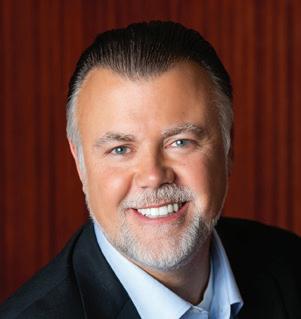
“Because Allianz is willing to sacrifice top-line growth for quality premium finance cases, we’ve been able to yield
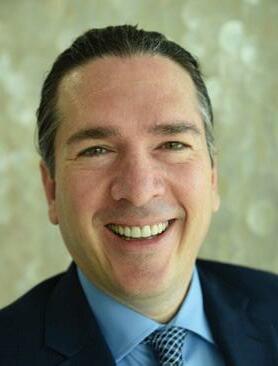
strong results and policies, upholding a 98% renewal rate on premium-financed policies,”2 says Petit.
“Whether a premium finance case works out well is often dependent on how it’s positioned from the start,” says Austin Bichler, Head of Life Insurance Product Development. “Alli anz takes a strong stance in opposition to the way premium finance is sometimes sold — as ‘free insurance’ or a ‘more affordable option.’ Problems also arise when realistic expectations aren’t communicated from the beginning, or risks are not explained properly.”
Premium finance is a long-term transaction, so if not monitored fre quently, it can lead to complaints.
This ongoing management of premi um finance transactions is paramount, as many factors can change as time goes on, such as loan expenses, interest rates, policy performance, loan qualification, loan exit plans and more — any of which has the potential to cause problems if not monitored and reacted to.
Petit says, “These issues can be avoided with alignment between the parties involved, which is why Allianz places such emphasis on selecting a vendor that meets specific cri teria: they’re committed to this business over the long term and adequately staffed to actively manage policies for the next 30+ years as well as handle the annual renewal process. Be cause vendors are making financial projections sometimes 30 years into the future, Allianz requires they make conservative projections when designing coverage in order to set realistic expectations and then evaluate risks and benefits each year.”
Allianz requires agents to not only go through their premi um finance training program before writing any business but also work with one of the carrier’s vetted premium finance vendors that administer these plans and provide the customer with stress test examples.
“The requirement of stress tests is a key Allianz differen tiator that has the life insurance policy illustrated at various crediting rates to demonstrate the variability of policy earn ings. Additionally, we require that loan interest rates in future years be modeled using rates we provide and not some arbi trary number, again to demonstrate variability of the loan inter est. The entire goal of this process is to create transparency to the customer around the items that move in their program and how variability can impact their desired results,” says Conover.
In an increasing interest rate environment, setting expecta tions is important. To give clients a complete understand ing, stress tests must be done to show what the future po tentially looks like given the economic environment, and
evaluated on a yearly basis for continued effectiveness. “It’s important to recognize that there will be times when premium finance works and times when it doesn’t,” says Con over. “There are going to be periods when clients don’t earn that 10% from our earlier example. Instead, the client might only earn 2% one year, and the loan interest could be higher than what they’re earning in that brokerage account. Howev er, reviewing these plans on an annual basis and continuing to monitor and make adjustments helps defend against poten tial pitfalls.”
“Allianz didn’t procure 2,000 premium finance policies by saying yes to every case that came through the door. The number, size and persistency of premium finance policies on the books is a testament to the agents we choose to work with, the specific requirements set forth and the vendors we’ve vet ted. We strongly believe not everyone is a candidate for pre mium finance, and the strategy is not the starting point for a conversation,” says Petit.

When one is choosing the type of insurance product that may be suitable for a premium finance strategy, there are options. The estimated breakdown by type puts IUL as the majority in most cases, whole life being used in a little more than a quar ter of cases and the remainder using universal life.

Bichler says, “Allianz focuses on accumulation IUL and takes into consideration what could be effective in a premium finance situation when creating our products. This includes the accumulation potential, the fee structure, the unique indi ces, flexibility and other benefits.”
If your clients are considering premium financing, Allianz and their approved vendors can provide support in executing these transactions. While there may be some headwinds cur rently, working with the right partner can help ensure that such headwinds will be accounted for. As Petit says, “If your house crumbles, it’s because you built a straw house. Allianz can help you build a stronger support system for your premium finance cases that can help them weather volatile market conditions.”
To learn more about how Allianz products and services can help support the premium financing conversation through volatile market conditions, visit https://bit.ly/allianzpf or for specialized support, contact Jeremy Conover at 949-351-2542.
Clients considering a premium financing strategy should consult with a financial professional to ensure they understand the potential benefits and risks as well as their tax advisor and attorney to discuss their specific situation.
1 Policy loans and withdrawals will reduce the available cash value and death benefit and may cause the policy to lapse, or affect guarantees against lapse. Withdrawals in excess of premiums paid will be subject to ordinary income tax. Additional premium payments may be required to keep the policy in force. In the event of a lapse, outstanding policy loans in excess of unrecovered cost basis will be subject to ordinary income tax. If a policy is a modified endowment contract (MEC), policy loans and withdrawals will be taxable as ordinary income to the extent there are earnings in the policy. If any of these features are exercised prior to age 59½ on a MEC, a 10% federal additional tax may be imposed. Tax laws are subject to change and you should consult a tax professional.
2 Internal Allianz statistic as of 6/2022. Number of lapses/deaths compared to number of years a policy has crossed over an anniversary. Guarantees are backed solely by the financial strength and claims-paying ability of Allianz Life Insurance Company of North America.
Products are issued by Allianz Life Insurance Company of North America, 5701 Golden Hills Drive, Minneapolis, MN 55416-1297.
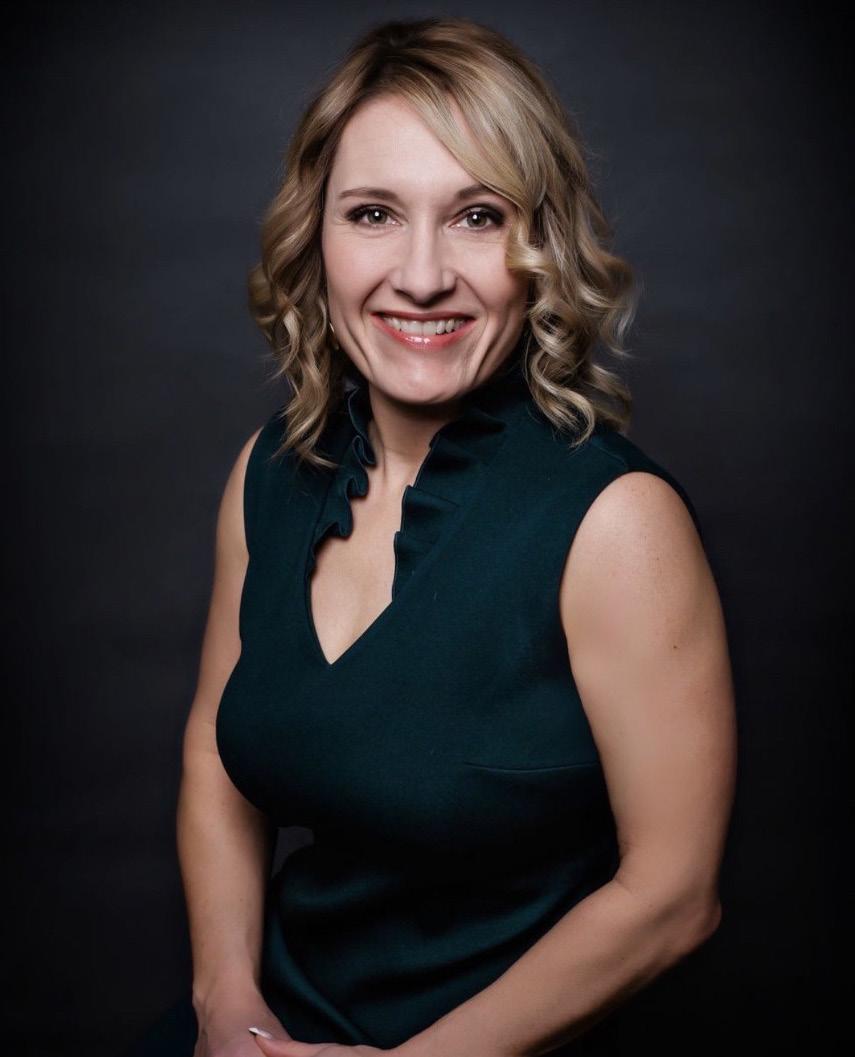
Odyssey is another name for a long, com plicated journey that often is undertaken in pursuit of a goal.
It’s the name Anna Maasel gave to the wealth management firm she founded Odyssey Private Wealth in Maumee, Ohio — as tribute to the journey she made to overcome the financial abuse that left her tens of thousands of dollars in debt. Now she wants to help her clients on their own journeys toward financial freedom and a comfortable retirement.
Her private odyssey began during a physically abusive first marriage, which led to her spending eight years fighting for custody of her children during her divorce. A few years later, she married her second husband and said she was hit with a devas tating surprise shortly after their wedding.
“Two weeks after we were married, I tried to use my credit card to buy a plane ticket. But my card was declined, and I didn’t understand why,” she recalled. “Up to that point, I had a perfect credit score, and I never really carried much of a credit card balance. And I hadn’t even used this particular card before.”
When she called her card issuer, Maasel was shocked to learn that her new credit card already had been charged up to its $10,000 limit. Checking further into the issue, she discovered charges to home im provement stores for purchases her new husband had made without her knowledge.
And the news got worse.
Maasel soon learned her new husband had charged up her other credit cards as well, and she was about $40,000 in debt.
“At the time, I was working for a school district and was making $14 an hour,” she recalled. “I knew that getting out of that kind of debt would be insurmountable.”
Maasel said she had spent years pay ing for attorneys fees and counseling fees from her abusive first marriage. This credit card debt knocked her down financially again. She and her husband filed for bankruptcy, and she hoped for a fresh start. But during the bankruptcy proceedings she discovered that their combined debt was more than $100,000 — and that she was pregnant.
But things eventually turned around. Maasel said she worked her way into a
better-paying job and her finances im proved enough that she was able to ob tain a credit card again. She was even thinking about applying for a mortgage on a new home. However, it didn’t take long for Maasel’s situation to spiral downward again.
“He did it to me again,” she said. “He took my credit card and maxed it out.” She filed for divorce.
“The fun never ends when you have this situation with fraud and abuse,” she said.
Maasel said she met with a financial advi sor at one point during her second mar riage and was interested in joining the pro fession. But it wasn’t the right time for her to do it.
“I needed to find a job that would enable me to earn a better living and to be able to better myself,” she said. “But at the time, I was the breadwinner for my family, and I didn’t want to be in a situation where I had to depend on commissions.”
Maasel met her current husband, Aaron, in 2019 and married him a year later. Aaron is the founder of Voyageur Advisory Group, also located in Maumee.
Private Wealth, which is the securities piece of our company.”
She and her husband not only blend ed their businesses, but they also have a blended family of eight children. Maasel said her family keeps her busy, but she also finds time to paddleboard and do some other fitness-related activities.
Maasel said she and her husband main ly work with retirees.
“My husband also is an attorney, and we do a lot of trust work for clients,” she said. “And when clients do their trust work, they fund their trust. That leads them to doing a lot of financial services business with us. They may choose annuities or in dexed universal life policies, or they may do some generational planning with dif ferent insurance products.”
Maasel said an average client is around 65 years old, either retired or close to re tiring. “I would say our average client has a net worth of between $1 million and $2 million. But we have clients who have a net worth of maybe only a quarter-million dollars and some who are closer to $5 mil lion in net worth.”
As her practice grows, Maasel said, she wants to serve more female clients.
“When I met my current husband and found out he was working in the financial industry, I thought it was really cool be cause I always wanted to have an oppor tunity to get into that profession and build myself in a way that I knew I was capable of,” she said.
Maasel works with Voyageur in addi tion to running Odyssey.
“I work with him on the insurance side, as I have an insurance license,” she said. “But I recently obtained my securities li cense, so I have my own business, Odyssey
busi ness a little bit more and serve more wom en in general,” she said. “Starting next year, we’re going to lean toward offering some woman-centered seminars on topics that empower them.”
to build that piece of
Maasel said one of her goals is to broad en her practice’s base to serve women of all ages — not only those who are of re tirement age.
want to give them the ability to think ahead and think about how they can plan
“We do serve some single women, and I would like
our
“I
My husband also is an attorney, and we do a lot of trust work for clients.
And when clients do their trust work, they fund their trust. That leads them to doing a lot of financial services business with us.
I can speak from a woman’s perspective. Sometimes women get intimidated by the man in the room and they look to anoth er woman for comfort. So I definitely pick up on that.”
Some female clients, she said, feel a sense of privacy around their finances.
“They don’t know who to trust. So they’re not going to divulge their finan cial information for fear of being taken advantage of.
“I do see some embarrassment and shame among women who are widowed and whose husbands always took care of the financial issues, and now they are faced with taking care of them. They feel embarrassed about their lack of knowl edge. And I see some women who are more independent and they’ve dealt with finances themselves.
“They have a little bit of reluctance to al low someone else to take over. But I would say overall that women are embarrassed and feel a lack of competence over their finances. They’re not sure what to do or who to trust.”
Maasel said she plans to offer some workshops and other events to teach wom en about their finances. “I even thought about developing an online course geared toward women so if they’re too embar rassed to come in person, they can still sit behind a computer screen and learn,” she said, “and then they might feel comfort able enough to start asking questions and having a conversation.”
for their future — whether it’s the longterm goal of retirement or how they will pay for their kids to go to college,” she said.
Maasel said her experience in overcom ing financial abuse provided her with tools that she uses to work with her clients.
“I would say empathy is the No. 1 thing that I came away with that applies to my practice,” she said.
“I think I have the strength of intuitive ness and empathy that men don’t neces sarily have,” she said.
“I’m very good at picking up on subtle, nonverbal cues. I can see when someone’s getting lost in our discussion that there’s an emotional piece they are struggling with. I’ll say to them, ‘You’re kind of quiet; tell me what you’re thinking here.’ Then
we stop the conversation and move it from being more educational and talking about how annuities work, for example, and move into, ‘Wait a second here. What are you feeling here? There’s something going on in your mind that you’re not saying out loud.’ I’m good at digging into those types of things.”
Maasel said she believes women, es pecially single women, often don’t trust themselves to make the right financial decisions.
“I have spent a lot of time explaining to them and helping them through the process,” she said. “I teach them that they have the strength to make a good deci sion, they have the ability to make the de cision. I want them to trust me because
Advisors who want to serve women must teach and empower women to help them overcome their embarrassment about their finances, Maasel said.
“I try to think about everything from my perspective,” she said. “When I was single, I needed somebody to teach me and to empower me. I didn’t have anyone who was willing to sit down and explain it to me.”
Susan Rupe is man aging editor for InsuranceNewsNet. She formerly served as communications di rector for an insurance agents’ association and was an award-winning newspaper re porter and editor. Contact her at Susan. Rupe@innfeedback.com. Follow her on Twitter @INNsusan.

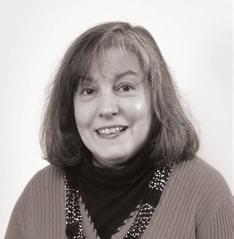
“I would say overall that women are embarrassed and feel a lack of competence over their finances. They’re not sure what to do or who to trust.”

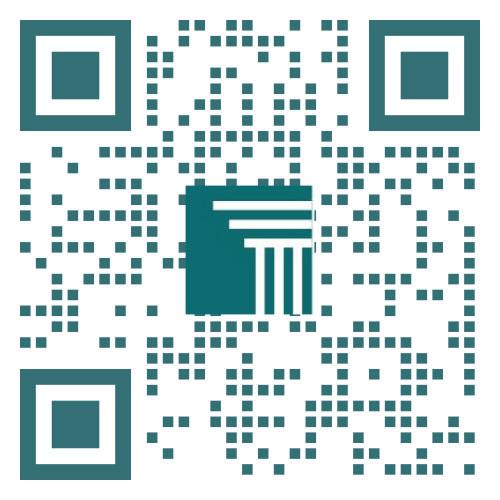



Behavioral insurance has found a place in health, auto and home coverage, but U.S. companies have been relatively slow to apply the dynamics to life insurance.
This type of insurance underwrites, prices and pays out according to a customer’s behavior. For example, auto insurers use telematics or mobile apps that can reward drivers with lower premiums based on their driving habits.
But such features are fairly new — and rare — in the life insurance space. John Hancock was likely the first, and perhaps one of the only, insurers to apply behavior al criteria to life insurance, with its Hancock Vitality product eight years ago. Now, Vitality, a separate UK-based insurer, operates in 40 different markets across the country with more than 30 million members enrolled.
Other insurers, including Manulife International, have begun offering behavioral discounts and credits in Asia and Europe. The concept is closely related to the be havioral economics most insurers use in designing designing, selling and marketing products. It is also related to what’s called the “nudge theory,” the idea that by shaping the environment, also known as the choice architecture, one can influence the likeli hood that one option is chosen over another.

A state regulator group seeks public comments on three potential “quick fix” con cepts to rein in indexed universal life illustrations.
The Indexed Universal Life Illustration Subgroup is pursuing a quick fix to Actuarial Guideline 49-A to address concerns about the illustration of volatility-controlled indices. Simultaneously, the group is pon dering a targeted reopening of the overall life insurance illustration regulation.
Bobby Samuelson noted that his propos al actually encompasses the thoughts ex pressed by several letter writers. Samuelson authored a pair of letters with fellow prod uct intelligence analyst Sheryl Moore. They favor removing the lookback option from calculations. Their letter focused on three ways to accomplish this:
1. Use the Hedge Budget, which is already an element of AG 49-A, for each indexed account.
2. Use a Black-Scholes fair-market value of the currently offered index partici pation in each indexed account.
3. Use the offered Fixed Account rate as the maximum illustrated rate for all in dexed accounts.
more than 110 combined affiliated partner agencies, have approved entering into a merger agreement. The merger will take effect on Jan. 1, 2023, upon completion of
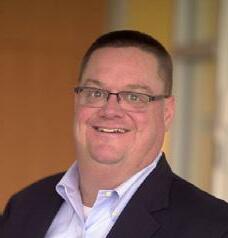
LIBRA Insurance Partners and Insurance Designers of America announced they will merge to create the largest independently owned life insurance marketing organiza tion in the U.S.

The combined company will operate under the LIBRA Insurance Partners brand.
Bill Shelow, CEO and president of LIBRA Insurance Partners, and J. Craig Collins, president and executive director of Insurance Designers of America, along with the respective boards of directors and

It is OK to buy life insurance on yourself with the intent to sell it to a third party, according to a Georgia Supreme Court rul ing in a case emanating from the HIV viat ical era.
Even though the $500,000 term policy was purchased fraudulently in the 1990s by someone who did not disclose his HIVpositive status but apparently intended to resell the policy, Jackson National is obligat ed to pay the death benefit, according to the court’s ruling.
The state’s top court reversed a federal district court’s ruling that, under case law, a person could not buy a life insurance policy with the intent to sell to a third party with no insurable interest, because that would constitute human-life wagering.
believe it to be.— Nathan Richardson is senior vice president, consumer division, CNO Financial Group

How a whole life policy can complement their other asset classes and provide an alternative source of funds at retirement.
By Tom HenskeInvestors have experienced higher than normal volatility with their in vestment portfolios recently. As such, the topic of “sequence of returns” has started once again to come to the forefront of discussions between clients and their investment advisors.
It is no surprise that a significant risk to retirement portfolios occurs when distributions are taken from those port folios in down years. Withdrawals from a portfolio during a temporary dip in
period. You will see that the investor ended 2019 with $271,000 in their account.
Now, imagine we simply flip-flopped the sequence of returns by reversing the order — starting in 2019 and then working our way backward to 2000 (see Chart 2).
Amazingly, under that same withdrawal rate, the retiree saw an ending balance of $1.8 million. That is seven times more than in the first example.
A simple way for advisors to help clients mitigate that risk is to ensure their clients will have an alternative source of funds to draw from in years when the markets have a pullback.
Years such as 2000, 2001, 2002 and 2008 are great examples of years in which a client would be well served by not with drawing from their equity portfolios and
» Money markets.
» Savings.
» Certificates of deposit.
» Short-term bond funds.
Advisors who are thinking ahead for their clients can improve upon those choices for clients, allowing them to “have their cake and eat it too.” Advisors must help their clients prepare for this early and construct a whole life insurance com ponent to complement their other asset classes and provide an alternative source of funds at retirement.
This alternative source includes guar anteed cash value with strong tax ad vantages. This gives their clients the low volatility asset class they need, with a potentially more robust overall return in comparison to the other alternatives men tioned previously.
A client who plans to include whole life insurance as a bucket from which to with draw funds can find an excellent source of funds to use in a year such as 2008. This allows the retiree’s portfolio time to re bound from what is historically a tempo rary pullback moving toward a permanent advance.
And when markets eventually rebound, clients can choose to reallocate money from their now-recovered equities and replenish the money they borrowed from their cash value life insurance policy in anticipation of the next rainy day.
markets can lead to adverse effects that leave clients at risk of running out of money prematurely.
To highlight this problem, we evaluat ed the 20-year time period from 2000 to 2019 (see Chart 1).
Our hypothetical client invested $1 mil lion in 2000 and took out $50,000 annual distributions during that 20-year time
instead drawing from one of their alterna tive fund sources.
Herein lies the problem. We are starting to see current retirees who haven’t quite thought this through and, as such, find themselves limited to alternative sources that combine low volatility with low re turns. The typical asset classes that fall into this category include:
Not only will this significantly enhance the aggregate return of a client’s retire ment nest egg, but it also provides the retiree a less stressful journey and the calm ness that retirement was meant to bring.
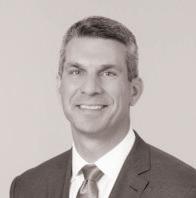
Tom Henske of The Affluent Insurance
Advisor works exclusively with financial advisors, accountants, attorneys and in vestment advisors to design life insurance portfolios that integrate with their clients’ financial and estate plans. He may be con tacted at tom.henske@innfeedback.com.

Clients often are unaware of the benefits life insurance can provide beyond a death benefit.
By Dan CaseyWhen mentioning life insurance to the av erage investor, the response is usually the same: “I pay a premium and in return, when I die, benefi ciaries receive a large sum of money to help replace income that is lost.”

Although this is accurate when refer ring to term life insurance, universal and whole life policies offer investors addi tional advanced strategies, including cash value, taxation benefits, and the ability to use the death benefit if needed for longterm care. All these features make the life insurance conversation much more interesting.
These advanced strategies can’t be done using term insurance but are available on policies that have cash value. A cash value life insurance strategy can be achieved with universal or whole life policies. In general, these types of policies are “overfunded,” meaning the policyowner is depositing money into the policy in excess of what is needed to provide the death benefit. Then this money is invested and grows tax deferred.
In universal policies, the money can be invested in the market using various indices or funds, depending on the type of policy. Meanwhile, a whole life policy usually provides a guaranteed fixed rate of return not tied to the market. These two types of insurance have pros and cons, and it’s widely debated which is the best type to own. As you can imagine, the an swer depends on the purpose of the policy and the age of the person seeking it.
If your client is sensitive to market
fluctuations, you might advise them to ward an indexed universal life or whole life policy. Whole life offers a fixed rate of return while IUL can provide guaran tees of principal protection and locked-in gains. This often will come at the cost of not receiving all the upsides of the market.
Tax benefits are a major draw for many individuals. As previously mentioned, the cash value (or the amount the policyowner overfunded) grows tax deferred. Those funds can be withdrawn from the policy in a tax-favored manner. Your client can withdraw funds and choose whether they want to withdraw the gains or some of their original deposit. This is the flexibility poli cyowners typically find appealing.
The gains, in this case, would most like ly be a taxable event, but the gains could be part of a strategy when your client’s income is lower during their first years of retirement. This flexibility is something
you can’t find in traditional retirement accounts, such as individual retirement ac counts, where the order of withdrawals is not in your client’s control and the require ment to withdraw certain amounts at age 72 can cause a tax nightmare, including the Social Security torpedo tax and poten tially higher Medicare part B and D costs.
A popular chosen strategy is not to withdraw money but instead allow the in surance company to lend it. The amount lent is not required to be paid back until death, when the death benefit proceeds are reimbursed by the life insurance com pany. This is a strategy the wealthy have been using for decades, and because it’s a loan, it’s completely tax-free.
Funds can be withdrawn in a lump sum or as a stream of income. The latter is what many gravitate toward as this stream of

Strategies to withdraw money tax-free aren’t only for the cash value but can also be done with the death benefit. As mentioned previously, the death benefit often can be “accelerated” during the policyowner’s life.
This accelerated death benefit is a lump sum that can be used tax-free if needed for a long-term care event. Usually, the life in surance company will require documen tation that the policyowner is unable to perform two or three of the six activities of daily living, or ADLs. ADLs are activi ties related to personal care. They include bathing or showering, dressing, getting in and out of bed or a chair, walking, using the toilet and eating.
Some clients assume Medicare will pay for a long-term stay in a hospital or
no-brainer. Of course, if the policyowner never experiences a long-term care event, the death benefit gets paid to the policy’s beneficiaries, providing a tax-free legacy that’s hard to beat.
Life insurance has become even more useful with recent legislation, such as the SECURE Act, which eliminated the stretch IRA and added the requirement of certain beneficiaries to withdraw re tirement accounts over a 10-year win dow after the IRA’s owners and spouses die. These changes require much larger withdrawals for most beneficiaries. These withdrawals often must be made at a time when the beneficiaries are in their peak earning years. If you believe income tax rates will increase, doesn’t it make sense to pass tax-free money instead of taxable retirement accounts to heirs?
Cash value withdrawal. A with drawal lets your client access a portion of the cash value of their permanent life policy.
Policy loan. Your client will be charged inter est if they take out a loan against their per manent life policy, but it’s usually lower than the interest charged by other lenders.
income is tax-free, helping to keep Social Security taxation and Medicare premi ums low.
The loan will have interest, however. The interest rate often is fixed and deter mined at the beginning and guaranteed for the life of the contract. If the funds in vested are performing better than the loan amount accruing, there shouldn’t be any issues. However, this is when you’ll want to work with your client to help create the best plan for their needs. Because of the many moving parts with this strategy, it is best to have the plan of action before the policy is sold and then tailor the policy to the plan. Even though these types of poli cies are flexible, it’s best to not veer too far from the illustration in order for the policy to perform at its best.

Policy surrender. A policy surrender is when your client cancels their per manent life policy to access the cash value portion as a one-time lump sum.
nursing home. In most cases, Medicare will pay for only 100 days of this type of care. Anything that extends past this point will need to be paid out of pocket.
With costs ranging from $5,000 to $10,000 a month for this type of care, a retirement nest egg can take a huge hit. If such an event takes place at the beginning of retirement, a spouse can quickly drain investments meant to maintain income for the rest of their life. A long-term care policy can be purchased and designed for this sole purpose. However, premiums typically will increase as the policyown er ages. Designing a life insurance policy with the acceleration of a death benefit for long-term care is usually much less costly than a long-term care policy. Making the decision to go this route is frequently a


Long-term care benefits. Adding a long-term care benefit to a permanent life policy lets your client tap into the death benefit to cover long-term care expenses that their health insurance doesn’t cover.
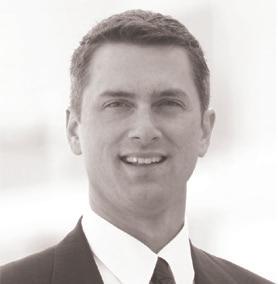
Between tax reduction strategies, policy flexibility, and the ability to use the death benefit while you’re alive, life insurance does more than replace income and should be considered by those of any age.
Dan Casey is an invest ment advisor repre sentative and owner of Bridgeriver Advisors in Bloomfield Hills, Mich. He may be contacted at dan.casey@innfeed back.com.
Take advantage of our award-winning journalism, licensure and reprint options. Find out more at innreprints.com.
Third-quarter annuity sales landed in record-setting territory. LIMRA expects sales to go even higher in the years ahead, thanks to protection products.

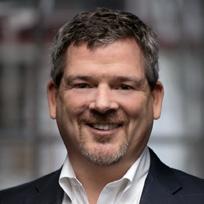
“There are people who have been suffering with point zero percent [returns] for the past 10 to 15 years,” said John Carroll, senior vice president and head of insur ance member relations and sales at LIMRA and LOMA. “To see 3 and 4 percent rates, and potentially even 5 percent, now showing up in front of these yields, is getting people’s attention.”
Rising interest rates get the credit for making protection-focused product sales, he noted.
Third-quarter annuity sales were $79.6 billion, a 27% jump from prior-year results, according to preliminary results from LIMRA’s U.S. Individual Annuity Sales Survey.
Total fixed-rate deferred annuity sales were $29.8 billion in the third quar ter, 159% higher than third-quarter 2021 sales. This is the best sales quarter for fixed-rate deferred annuities ever recorded, LIMRA noted.
Traditional variable annuity sales continued to struggle. In the third quarter, tra ditional VA sales fell 37% to $13.7 billion, the lowest quarterly results since the third quarter of 1995.
perpetual capital vehicle, with Blackstone serving as the general partner and the majority of Resolution Life’s existing in vestors expected to roll their investments into this vehicle.
and obtain approximately $1 million un der the false promise that the life insur ance funds would be better invested in annuities after she realized she was under investigation for an earlier annuity theft scheme, authorities said.
She tricked the client into writing two checks totaling more than $1 million to a law firm, misrepresenting to the client that the law firm worked for Williams’ annuity company and that the funds would be used to purchase an annuity for the victim.



Resolution Life signed a deal with Blackstone to pump equity into its global life and annuity insurance business. The partnership combines Resolution Life’s global liability management plat forms with Blackstone’s insurance asset management capabilities, the companies said in a news release.

Resolution Life and Blackstone plan to raise $3 billion of new equity capital commitments — including a $500 million strategic investment from Blackstone — bringing the company’s overall equity capital base to more than $8 billion.
The $3 billion in new capital would be raised through a newly established
A former Tucson, Arizona, insurance agent was sentenced to more than 11 years in prison for defrauding an elderly client of more than $1 million.
Koreasa Maria Williams, 47, was sentenced to 136 months in prison and ordered to pay restitution to her victim after she pleaded guilty to two counts of wire fraud. This sentence was ordered to run concurrent with a 51-month sen tence for an earlier annuity fraud scheme.
In October 2018, Williams advised her 80-year-old client to cash out eight life in surance policies
gardless of the advisor’s compensation or other incentives.
A lower court had ruled that the state overstepped its bounds in creating the rule. The New York regulation applies to life insurance sales as well and sets a high bar for a sale to be in the consumers’ best interest.
Planning for retirement has never been more challenging than it is today.
— David Lau, founder and CEO of DPL Financial Partners





Several factors, including gross domestic product, unemploy ment and inflation, affect the strength of the U.S. economy. Although the economy is strong, the market has been experiencing the high est inflationary rates in 40 years.
Combating high inflation requires in creasing interest rates, encouraging people and businesses to borrow and spend less.
On Sept. 21, the Federal Reserve approved its third consecutive 75-basis-point hike, bringing current lending rates to a new range of 3%-3.25% — the highest they’ve been since the 2008 global financial crisis. Analysts predict interest rates will contin ue to 3.5% before the end of the year.
In theory, higher rates mean less spend ing, which translates to lower demand and should slow down price increases. But this could also lead to less economic activity. Rising rates and high inflation hit lower-in come Americans the hardest as they face challenges purchasing necessities such as groceries and gas.
For retirees, it is a double-edged sword. While inflation diminishes a retiree’s pur chasing power and increases lifestyle ex penses, high rates on savings vehicles such as certificates of deposits or money market accounts mean they could potentially earn a little more.
Over time, however, inflation rates negatively impact how much retirement dollars can stretch. To combat this, in dividuals should consider products that help offset the cost of inflation. Annuities, for example, pay more as interest rates in crease — casting a light when things seem grim. Rising rates may sound like music to the ears of investors debating wheth er to add an annuity to their retirement portfolios.
In addition to being a safe accumulation vehicle, an annuity is also an income-gen erating product. Although there are differ ent types of annuities, the good news is that interest rates determine their payouts. So, the higher the interest rate, the higher the annuity income payment. Data shows that average immediate annuity payouts have increased by more than 11% for men and 13% for women since 2022. The trend ap pears even more pronounced with longev ity annuities, a deferred annuity that starts paying income later in life. Payouts have jumped 42% for men and women since the start of the year.
A fixed indexed annuity protects princi pal from market loss and will never decline in value so long as the annuity owner con tinues to hold it through the length of their contract. However, annuities also generate income from interest. The annuity’s in terest rate is based partly on changes in a market index, which measures how part of the market performs. So as far as the econ omy goes, the higher the interest rate, the higher the annuity income payment. At the same time, the interest earning potential will never fall below zero, even if the index declines in value. This protects the product from inflation and helps generate higher income payouts at retirement.
Generally, FIAs calculate index-linked interest in the following manner:
» A participation rate, which is the per centage of an index that is used to calculate interest crediting.
» And/or a cap, which is the maximum interest that will be credited.
» If the index loses money in any given year, the FIA does not lose money but rath er will credit 0% (the interest rate floor).
Together, the interest rate floor, partici pation rate and cap determine the amount of interest someone earns. The interest earnings rate will always remain between
the floor and the cap, and it will not rise above the cap, even if the index goes high er. Conversely, it will never fall below zero, even if the index declines in value. The val ue of the money will never decline due to market loss for as long as it is in the FIA, although it can increase with a rising index.
If your client withdraws their money from an FIA before an index term ends, the annu ity may not add all the index-linked interest for that term to their account. Additionally, like many long-term financial products, such as certificates of deposit or mutual funds, FIAs have a surrender fee for early withdrawal, depending on the contract.
Market volatility and rising rates have created a perfect storm for investors look ing for ways to protect their nest eggs and generate a guaranteed income stream in retirement. According to LIMRA, first-quarter FIA sales were up 21% this year compared to 2021, and LIMRA is predicting FIA sales will grow as much as 10% by the end of 2022. Currently, lifetime fixed-income annuity payouts are up 29%30% from a year ago.
Americans have never been confident about their retirement futures. Research con ducted by the Indexed Annuity Leadership Council found that 42% of Americans say the pandemic has made them more riskaverse regarding their finances, and 76% of Americans say protecting their retirement nest egg from loss is important to them. Yet, as we face a potential recession, new research reveals that among those who have an annuity, 74% believe their savings and sources of income will last their life time, compared with only 43% for those without an annuity.
Americans do not want to outlive their income streams, and that suggests they are ready to embrace annuities and other retirement products that can provide life time income.
• 54% of Americans said they never heard of an FIA.
• 51% of Americans said they would consider setting up an FIA in the next 12 months after one was explained to them.
• 77% of Americans ages 18-34 said they are more likely to consider an FIA after it was explained to them.
• 30% of Americans aged 55 and older said they are more likely to consider an FIA after it was explained to them.
When discussing the purchase of an FIA or any other type of annuity as part of your client’s retirement plan, start with three things:
1. Know your client’s financial goals and risk tolerance, how long they have before they retire, and what they will need their annuity payouts to fund. Understanding how and when they use their money will help them decide what to buy today.
2. Look into an insurer’s financial
strength rating. The rating is critical be cause annuities are backed by insurance companies, not the federal government. The higher the rating, the more likely the insurer will be around to pay out your cli ent’s annuity.
3. Know the roll-up rate (percentage at which the guaranteed side of the an nuity keeps growing) and the payout rate (percentage of the annuity your cli ent will receive) of an annuity. An insur ance company’s portfolio of investments and profits may determine rates’ varia tions and can significantly vary between
providers. Be sure to shop around to get the best quotes from different companies.

In addition to a steady, guaranteed and lifetime income stream with secured prin cipal, FIAs offer predictable earnings and tax-deferred growth. Increasing interest rates present an opportunity to consider annuities as part of a diversified retire ment portfolio. Other tactics to consider as you prepare your clients for inflation in retirement include rebalancing portfolios, pursuing alternative assets, liquidating as sets to increase cash holdings, adding divi dend-paying stocks to retirement portfolios and moving portfolios away from equities.
Retirement readiness shouldn’t be left to chance. And with the right amount of re search and guidance, even uncertain times such as these can pave the way for thought ful retirement planning.
Jim Poolman is executive director of the Indexed Annuity Leadership Council. He may be con tacted at jim.poolman@ innfeedback.com.
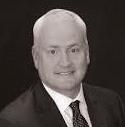
American Equity Investment Life Insurance Company® does not offer legal, investment, or tax advice. Each client has specific needs which should be discussed with a qualified legal or tax advisor.

© 2022 American Equity. All Rights Reserved.
6000 Westown Pkwy, West Des Moines, IA 50266 www.american-equity.com ● Call us at 888-221-1234
The 2023 Medicare open enrollment period wraps up early this month, and Medicare Advantage is expected to account for more than half of Medicare, despite greater scrutiny of fraud allegations and criticism of MA’s benefits.
Not only are MA plans expected to serve a majority of enrollees, two com panies will be responsible for nearly half of those enrollments: UnitedHealth Group and Humana.
MA plans and providers have been accused of fraud for overbilling the system, usually through upcoding, or the practice of finding a more lucrative designation for a patient’s conditions. That is because the system pays per patient, rather than for services — and the sicker the enrollee, the higher the reimbursement.
UnitedHealth, which has 27.1% of the market, has been accused of fraud by a whistleblower and the U.S. government, and has also been accused by the inspector general of being overbilled. Humana, with 17.4% of the market, was accused of fraud by a whistleblower and of being overbilled. Of the top 10 carriers, only Centene, with 5% of the market, was not accused of any fraud. Carriers have denied the allegations, saying their intent was to code patients accurately.

The COVID-19 pandemic combined with the Affordable Care Act resulted in a his torically high percentage of Americans having health coverage. Between 2011 and 2021, the percentage of Americans with coverage increased by 7.4% to 91.7% of the population , said Julian Polaris, Manatt Health associate.
More than half of Americans receive health insurance through an employer, with the rates of employer coverage fluc tuating between 54% and 57% from 2010 and 2021. When unemployment increases, the number of people who have employ er-based coverage usually falls. However, in 2021, the American Rescue Plan Act
subsidized COBRA coverage for those who left or lost their jobs, enabling more people to remain insured.
After rising during the Obama admin istration and falling during the Trump administration, the number of Americans covered under Affordable Care Act mar ketplace plans rose sharply during the pan demic. As of 2021, 3.5% of Americans — about 14 million people — were enrolled in ACA coverage.
Meanwhile, over the past decade, the number of Americans aged 65 and older has grown 12 times faster than the num ber of Americans younger than 65. During that time, the proportion of Americans covered by Medicare has risen 4 percentage points. In 2021, Medicare cov ered 60.2 million Americans, or 18.4% of the total population.

Elevance Health, previously known as Anthem, faces a federal lawsuit alleging it pocketed at least tens of millions of dollars by submitting inaccurate claims to the U.S. Centers for Medicaid & Medicare Services. The suit alleges the company did not
check diagnosis codes it submitted for reimbursement between early 2014 and 2018 for its Medicare Advantage plans. A U.S. district judge said the financial costs to the government were “substantial” and not “merely administrative” — amounting to more than $100 million.
Elevance said the company operated in “good faith” and that CMS should update regulations if the agency wants to “change how it reimburses Medicare Advantage Plans for health services.”

New annualized premium for work place disability insurance and supplemental health products increased in the second quarter, according to LIMRA’s workplace benefits sales surveys.
Total workplace disability insurance new annualized premium jumped 10% in the second quarter to $629 million. Despite the strong premium growth in the second quarter, first-half workplace dis ability premium was $2.1 billion, down 4%, compared with the prior year.
Total workplace supplemental health in surance product premium, which includes accident, critical illness, cancer, hospital indemnity insurance and other health supplemental health insurance products, was $485 million in the second quarter, 9% higher than during the same period in 2021.

Nearly half of large employers saw an increase in the number of workers using mental health services.
Scams involving health care have increased exponentially.Delaware
Insurance Commissioner Trinidad Navarro

With inflation in the headlines from Wall Street to Main Street, clients who think this is only a current challenge should be forgiven. Let’s face it — today’s discussions center on near-term fixes to the issues right in front of us, whether it is new legislation or individuals and families thinking about how to manage the rising day-to-day costs of gas and groceries.

As every advisor knows, addressing inflation has always been a necessary fix ture of any long-term financial security plan. This is especially true when it comes to helping clients plan for long-term care in retirement.
While the current environment chal lenges household budgets across the country, it is also a unique window in which advisors can proactively talk to
tion for their retirement savings decades from now and help them put a plan in place to manage long-term care risk.
Unlike day-to-day expenses, longterm care planning is not an area where individuals and families can easily make cuts or trade-offs to offset inflation. Any decision regarding caregiving is not just financial but also has practical, physical and emotional aspects — which high lights the importance of helping clients plan today so they may have more care choices, regardless of tomorrow’s markets or the economy of the future.
Many of us will need to rely on assistance with daily activities as we age. It might be help with simple tasks such as walk ing, bathing and dressing, or more ded icated care in situations where there is a chronic condition such as dementia or Parkinson’s disease.

The simple fact is the cost of this type of care is rising consistently. Even if the current inflation we are seeing across the
of a home health aide today is $27 per hour, and it is projected to rise to $49 per hour by 2042.
The leading driver of this cost is grow ing demand. By 2030, all baby boomers will be at least 65 years old, and according to the U.S. Census Bureau, older adults are projected to outnumber children un der age 18 for the first time in U.S. history by 2034. To date, caregiving for the elder ly has been largely provided by informal networks of younger family members and friends. Demographic trends suggest this cannot continue at the same level.
Growing demand for care, coupled with the shrinking safety net of informal caregivers, is putting even more pressure on the already tight labor market for pro fessional caregivers. This is pushing up wages and, in turn, the cost of care.
For many people, finding cost-effective care may become extremely challenging. This reality must be acknowledged as

early as possible in an individual’s finan cial life to maximize the time to plan and save accordingly. The time for clients to understand this reality is right now.

In a world of increasing costs, caregiver shortages and increased demand for ser vices, it is essential that clients talk to their loved ones about their expectations for their own care and how costs will be covered.
According to Northwestern Mutual’s 2019 CARE study, 36% of Americans ages 18 and older are currently or have been caregivers, and two in five of them did not know in advance they would step into a caregiving role. This can put a lot of stress on everyone — the individual needing care and the loved ones providing it.
When clients explain their preferences and expectations clearly, it helps shape what is needed practically and financially and avoids unexpected burdens. Areas to help them consider include:
» Do they want to age at home, or would they consider selling the home and mov ing? If so, where, and what are the com parative costs?
» If they have children, is there an expec tation that the children will step in to help with care? If so, has this been discussed explicitly? Adult children are not always
living facility? Both scenarios have differ ent financial considerations.
In this inflationary environment, it is also essential to help clients protect their plans and savings. Too many people work hard to save and build up their retirement nest egg,
one wants to think about failing health or losing their independence. Still, these honest conversations are essential to en suring the correct framework and contin gencies are in place to reduce stress and financial burden down the road.
Fortunately, there are many options to help people manage their long-term care risk. The long-term care insurance mar ketplace has evolved over the past decade to meet a wide variety of needs with prod ucts that are more flexible, can provide benefits whether or not care is needed, and offer a range of options to ensure benefits are aligned with the higher costs of care in the future.
Use the current environment to jumpstart conversations with clients now. A retirement plan isn’t safe unless longterm care planning is part of it. The sooner clients start planning for it, the more options and flexibility they will have as they age.
in a position to leave their careers or split time between caring for younger children and an aging parent.
» Would they be comfortable with a pro fessional caregiver coming into the home, or would they prefer to be in an assisted
only to see it be repurposed to pay for the high cost of home health care or assisted living services for which they had not planned. Our 2021 Planning & Progress Study found that only a third of adults have plans for their own long-term care needs. These conversations are never easy. No
Ken Latus is vice pres ident of risk products, Northwestern Mutual.
Ken may be contact ed at ken.latus@inn feedback.com.

Generation Z, the youngest generation in the workforce, is the most ethnically diverse gen eration in the U.S., and their approach to their finances is diverse as well. Bank of America took a deep dive into this generation’s views on money and discovered ways in which race, ethnicity and gender may influence their financial goals and challenges.
Black Gen Z is paving the way toward financial independence, embracing a hustle culture in order to achieve their goals. They are more likely to con sider taking on a second job (35% vs. 25%) and prioritize starting or growing a business (15% vs. 5%), compared to non-Black Gen Z.

Hispanic Gen Z is driven by family considerations when evaluating their finances. They state a hope to pass down wealth to the next generation (36% vs. 27%) and a desire to succeed financially to make their parents proud (36% vs. 23%) as key motivators at higher rates than non-Hispanic Gen Z.
Gen Z women display financial literacy gaps and a lack of investing relative to men, according to the survey. They report feeling less equipped than men to save for retirement and to invest, and fewer Gen Z women have begun or are considering individual investments or retirement savings vehicles, such as a 401(k) plan.

Debt is weighing down workers. That’s according to the 2022 Workplace Wellness Survey published by the Employee Benefit Research Institute and Greenwald Research, which found that 80% of workers describe their debt level as a problem — a 15 percentage point increase since 2021 (65%).
In unpacking the debt problem, the survey found 78% describe their household’s level of credit card debt as a problem. In addition, more than half describe their medical or health-related (57%) and student loan (51%) debt as problems. Health emergencies (47%) are the biggest contrib utor to medical debt, while funding their own education (64%) is the top source of student loan debt that is considered problematic.
Inflation is scrambling retirees’ nest eggs as they spend much more or a little more than they can af ford in 2022 (17% in 2020 vs. 27% in 2022). That’s the latest from the Employee Benefit Research Institute’s 2022 Spending in Retirement Survey.
Despite market volatility, high inflation and the threat of a recession, retirement “super savers” continue to make savings a top priority, according to a study by Principal Financial Group.

The study found that more than half (59%) of survey respondents said they plan to save more than $20,000 toward retirement in 2022 , which is up from 51% in 2021. This is largely attributed to the majority of the segment described as “super savers” (82%) feeling confident they are in good shape to endure a recession and the sacrifices they are willing to make to their daily expenses to maximize their retirement contributions, the survey said.
In most cases, super savers focused on long-term financial sacrifices, not shortterm cuts. Their top sacrifices included:

• Driving older vehicles (44%).
• Not traveling as much as desired (38%).
• DIY house projects and chores (36%).
• Owning a modest home (35%).
The survey found Black and Hispanic retirees, as well as those in the lower annual household income brackets and poor self-reported health status, also indicated that their spending is high er than they can afford. Approximately half of retirees say they spend less than $2,000 each month, while 1 in 3 spend between $2,000 and $3,999 each month. Sixteen percent spend between $4,000 and $6,999, with only 3% spend ing $7,000 or more each month.
Someone save us! 34% of millennials said they are falling behind in retirement saving.
Where does Gen Z get their financial information?
from Facebook
from YouTube
from Instagram
from Twitter
Bank of America
Deteriorating economic conditions have created three headwinds that your clients face: inflation at 40-year highs, short-term interest rates forecasted to rise, and renewed market volatility. How can you help clients take advantage of this uncertainty? Turn those headwinds into tailwinds with solutions that can protect principal, earn interest based on part of the positive changes in market indices, accumulate tax-deferred, and even take advantage as rates rise. Scan the QR code to get the details, or visit us at SecurityBenefit.com/CreateCertainty. One Security

Assuming a modest reduction in ben efits is a prudent step to ensure re tirement plans will meet future needs.
• Ron MastrogiovanniAlmost half of millennials do not expect to receive a dime in Social Security benefits, according to a survey by Nationwide Financial.
Advisors paying attention to Social Security Administration Trustee Reports will recognize that although the system is stretched, there’s every reason to believe Social Security will continue to play an important role in retirement for this and future generations.
The question that advisors must help answer is how much their millennial cli ents should expect to receive from the program when they retire.
A key benchmark is the SSA’s June 2022 report, which notes that without chang es to the program, starting in 2035 there will only be enough funds to pay 80% of
promised benefits. The report emphasizes the time-sensitive need to address fund ing: “If substantial actions are deferred for several years, the changes necessary to maintain Social Security solvency would be concentrated on fewer years and fewer generations.”
The report notes that benefits would need to be reduced by 24.9% across the board in 2035 if changes are not made before then. Millennials will start retiring a decade later. Since some generations al ready will be receiving benefits — which are unlikely to be cut — in the worst-case scenario, millennials would bear the brunt of benefit reductions.
In HealthView Services’ white paper “Social Security Benefits: What Should Millennials Expect?,” we outline steps Congress is likely to take to address the trust fund’s solvency and provide benefit projection data highlighting the impact on future retirees.
It is clear that this is not an intractable issue. As the most recent Social Security
report notes, increasing the current pay roll tax of 12.4% by 4.07 percentage points (typically split evenly between employ ees and employers), for a total of 16.47%, would address the program’s shortfall.
Other changes could include delaying full retirement age from 67 to 69, chang ing the earliest age at which benefits can be claimed from 62 to 65, and increasing the $147,000 cap on the payroll tax. All of these changes would decrease payouts or increase revenues for the program.
Given the potential political unpalat ability of a significant tax increase, the most likely scenario — consistent with historical precedent — would be a combi nation of actions, with changes to eligible claiming ages likely to be phased in along with modest tweaks to payroll taxes.
Changes to full retirement age and early claiming eligibility could allow the Social Security Administration to contin ue to pay out 100% of promised monthly benefits, although at a later date for the retiree, this effectively would be a cut in

benefits for millennials. By extending full retirement age from 67 to 69, a 35-yearold making $100,000 this year would lose $375,000 in lifetime benefits if they claimed at age 67, or $210,000 if they claim at the new hypothetical full retire ment age of 69. This one step would, on its own, be the equivalent of reducing life time benefits by 13.3% for those claiming at age 67 or by 7.5% for those who claim at age 69.
Changing the early claiming age from 62 to 65 would mean losing three years of potential Social Security income. The lost income from both a delay in full re tirement age and early claiming would be significant.
Using a 20% reduction in lifetime bene fits for millennials provides a middle path for planning purposes. For a 35-year-old millennial (the midpoint age of this gen eration) earning between $50,000 and $150,000, this would mean a reduction in lifetime benefits of between $365,000 and $675,000. This assumes claims are made at the current full retirement age of 67, the retiree lives to average actuarial lon gevity, and that annual cost-of-living ad justments projected by the Social Security Administration are applied.
The average 35-year-old millennial earning $50,000 in 2022 would receive $13,500 less in annual Social Security income in the first year of retirement. And if they make between $100,000 and $150,000 in 2022, Social Security benefits would be reduced by $21,000-$25,000 the first year of retirement.
Although these numbers are significant, it’s important to recognize that closing this shortfall is achievable, given mil lennials’ retirement time horizons. For a
35-year-old, a one-time investment today of $27,000 into a financial product gener ating an annual 5% return would close this gap by the time the person retires.
As is already widely recognized, de laying claiming to maximize lifetime Social Security income also offers ways to increase benefits. Our data shows that a 35-year-old earning $50,000 annually would increase their first year’s Social Security benefits by $40,000 if they claimed at age 70 rather than at age 62. A millennial earning $150,000 today would increase their first-year annual benefits by $75,000 when they retire.
The simplicity of the message (planning for a 20% reduction in benefits) provides a basis to engage with clients around the potential changes to the program that may impact this important component of retirement income.
The key to driving action is explaining that the additional savings required to make up this difference are modest and achievable. Should the actual reduction in retirement benefits be less than antic ipated, the value of retirement portfoli os will have increased, ensuring there is no downside.
Projected gross Social Security ben efits are a starting point for retirement income planning that should lead into a discussion of expected net benefits. With Medicare Part B premiums (which are deducted from Social Security checks) rising faster than cost-of-living adjustments, income-based surcharges (income-related monthly adjustment amount), and the taxation of benefits, affluent clients will see smaller Social Security checks than they anticipate — requiring customized approaches to achieving their specific goals.
Encouraging clients to increase
savings or investments now, in anticipa tion of lower lifetime benefits, provides the opportunity to take advantage of compounding returns. With a long time horizon, modest additional investments today avoid having to fill a much larger savings gap down the road.
Social Security’s own solvency data provides a reasonable basis for retirement planning. It strikes a balance between the Congress-does-nothing doomsday sce narios that millennials have bought into and the Panglossian idea that Congress can wave a magic wand and Social Security will continue to pay 100% of promised benefits without changes to the program.
Taking into account Medicare premi ums and taxes to calculate the net Social Security checks millennials actually will receive offers advisors a significant op portunity to avoid surprises down the road, demonstrate expertise, build trust, and grow mind and wallet share.
It’s perhaps no surprise that with the confusion and low expectations around Social Security, millennials are asking advisors about its role in retirement plans. While advisors and their clients will need to play close attention to what Congress does over the coming years, assuming a modest reduction in benefits is a prudent step to ensure retirement plans will meet future needs.
Ron Mastrogiovanni is CEO, HealthView Services. He may be contacted at ron.mastrogiovanni@ innfeedback.com.
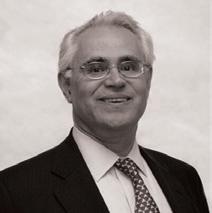
Take advantage of our award-winning journalism, licensure and reprint options. Find out more at innreprints.com.
Why it’s vital to establish a formalized relationship and look at ways to go for the win-win.
By Ayo Mseka
In the search for new clients, many financial professionals are turning to centers-of-influence marketing, which enables them to network with other professionals and grow their business.
When it comes to embarking on cen ters-of-influence marketing, “there has been a big shift in the last decade in how good alliances are formed,” said John Pojeta, vice president, business development, The PT Services Group, “and I think it’s critical to understand the lay of the land before approaching this valuable opportunity.” Pojeta and Brian Haney, founder and CEO of The Haney Co., recently shared some advice on finding success with this approach.
Pojeta’s first piece of advice is that
developing successful centers-of-influ ence joint ventures requires patience. “These relationships rarely develop quickly, and it can take time to build trust and allow your partner to analyze the benefits methodically,” he said.
According to Pojeta, two types of pro fessionals tend to make the best partners for centers-of-influence joint ventures: CPAs and property/casualty agents, par ticularly those who don’t want to be in volved in money management.
Although there are differences and benefits for each, they both have one thing
in common: It is vital to develop a formal ized relationship. “In the past,” he added, “these types of alliances were friendly and done over a handshake, but for actu al value for both parties, you should look at them with a more critical eye, and at the very least, you should have a plan for revenue sharing (particularly for PLMA states) and joint marketing efforts.”
There are a few things to be aware of when it comes to CPAs, Pojeta said. First, it’s smart to position the CPA as the lead
According to Pojeta, two types of professionals tend to make the best partners for centers-ofinfluence joint ventures: CPAs and property/ casualty agents, particularly those who don’t want to be involved in money management.
in the relationship. Owning the relation ship and taking the lead are very import ant in order for them to maintain the role of trusted advisor.
Next, connect with small, indepen dent firms; large firms will already have in-house advisors, he advised. As men tioned before, CPAs will take a long time to develop this relationship. “Be sure to consider their motivation and benefits for embarking on this relationship, and be sure to align with your audience,” he said.
A fantastic way to build this relation ship is to develop CPE credit classes, providing your CPA partner with an addi tional benefit. CPE classes are also excel lent for meeting 10 to 12 CPAs who may become great partners, he added.
In terms of P/C agents, there are some additional considerations, Pojeta said. First, P/C agents already are licensed, mak ing revenue sharing more straightforward. Additionally, they are already sales-fo cused, which can make the development of the joint venture progress more quickly.
On the other hand, P/C agents may not be as well-organized regarding ini tiatives such as marketing. “Lastly,” he advised, “you will want to look for inde pendent P/C producers, as large firms are frequently more restrictive in permitting outside joint ventures.”

In addition to CPAs, Haney has formed successful working relationships with:
» Attorneys. The attorneys Haney has received the most value from are merger and acquisition attorneys and transactional attorneys specializing in helping businesses that are being sold or buying other busi nesses. “Transactional attorneys have been much better resources for our practice since we too specialize in the small-busi ness marketplace and help our clients build businesses that are highly sellable,” he said.
» Chief financial officer for hire/out sourced human resources. Staying with the small- business theme, other partners that often fly well under the radar are out sourced CFO services and HR specialists, Haney said. “With so many businesses looking to these kinds of providers to sup port them operationally, finding a good
partner here can be a huge benefit to your practice. These professionals often see the ins and outs of the business’s cash flow, employee benefits and even sometimes the commercial P/C insurance,” he added.
» Financial coaches. These individuals have the potential to be a gold mine if you find the right candidate, Haney said. Essentially, he explained, coaches help clients launch themselves financially, addressing critical core needs such as budget and cash flow, getting out of debt, and various other foun dational needs.
Once clients achieve their stated goals, they often “graduate” to the next level of financial viability — one that naturally lends itself to a financial ad visor who can continue to build off the coach’s good work.
“They also might be a perfect practice partner for those clients who just aren’t ready to work with you yet because they need help with things that might be a bit outside your wheelhouse,” he said.
» Bankers. Forming a good relationship with a few bankers can be an excellent practice synergy to develop. As a former banker, Haney said that he can speak from firsthand experience of how valuable bank ers can be. Again, there are some criteria to consider in choosing a good candidate, and the first is to make sure the banker is not part of a banking system that already has its own insurance and investment ser vices, he said.
» Credit unions as well as community and even regional banks also can be good candidates. “To get even more strategic,”
Haney said, “find a business or commer cial banker who concentrates on working with entrepreneurs and small businesses looking to grow or expand. These can be great relationships where you enhance one another’s capabilities to help the business owner start off on the right footing and grow successfully.”
» Industry influencers. Few profession als (financial or otherwise) know how to develop these individuals, Haney said, and there may not always be ideal candidates that fit this category.
However, he added, here’s how to find out: “Search for the top podcasts, YouTube channels or blogs read by some of your best clients or even prospects. Ask them who they listen to, the books they read, and even look at the speakers who head line their industry conferences. Often there may be a highly visible person known for their industry expertise, ma jor industry consultant or media expert, and forming a solid relationship with this type of professional could be rocket fuel for your practice. If you do it right, you gain from their visibility and cred ibility, which has powerful reputational implications you might not be able to develop on your own.”
Ayo Mseka has more than 30 years of ex perience reporting on the financial services industry. She formerly served as editor-in-chief of NAIFA’s Advisor Today magazine. Contact her at amseka@ INNfeedback.com.
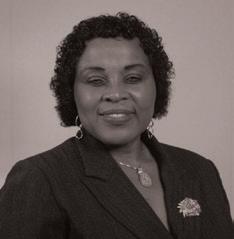
It’s 10 p.m.; do you know where your policies are?

In 2020 alone, $3.33 trillion of death benefit was sold, although there is an anecdotal sense that as much as 50% of those sales was policy replacements rath er than entirely new benefits. It’s also worth noting that 2020 sales were achieved in an industry in which the number of life insurance companies was one-third that of 1988, the year in which the number of life insurance carriers was at its peak.
A further intriguing fact: The life in surance industry’s payments on behalf of beneficiaries, annuitants and other recipients of benefits from their policies (including health insurance) totaled $678 billion in 2020. This figure is second in total distribution only to the Social Security Administration’s Old-Age and Survivors Insurance Trust Fund pay ments of $993 billion that year.
A final sobering statistic: In a previous article, I cited a 2016 academic paper by Daniel Gottlieb and Kent Smetters in which they tallied “… nearly 88% of uni versal life policies that ultimately do not
terminate with a death benefit claim.” There is a significant mismatch between the need for life insurance products as expressed by the amount sold — and the proportion that will ultimately pay a death benefit. Lapses or exchanges that result from a mismatch of client needs and re sources with the products sold, as well as agents who do not help actively man age those products, give rise to concerns
as the reasonableness of expectations conveyed to the buyer in the process of selling such a policy.
That said, the “pay what you want to pay when you want to pay it” sales man tra that propelled UL sales statistics to more than 40% of permanent insurance sales by 1985 (simultaneously decimating whole life sales during the same period) quickly devolved to “pay as little as you
about standards of care in the sale of life insurance.
It is easy to lay the problem on uni versal life-type policies, which were first introduced almost 45 years ago. But it is not the product’s fault; it’s a matter of how UL is sold and managed as well
want (or nothing) as infrequently as you want (or never).”
Once again, anecdotally, very few of the UL policies sold in the 10 years after the product was introduced still are in force. Sure, there were some premature deaths prompting payment of death
The increasing demand for standards of care in the sale of life insurance: ‘Back to the Future’
How can insurance agents do the right things right as they look to the future of sales, service and interactions with prospects and clients?
Looking back, we’ve seen four 10-year cycles in the generational evolution of current assumption universal life products, from UL to VUL to NLG to IUL. What’s next? Back to basics!
benefits for policies sold in that early period. But for the most part, as current interest rates in the U.S. economy began their 40-year downward spiral from the peak in late 1980, the focus on new sales (and replacement sales) began shifting to policies that could benefit from a revived stock market — in no small part due to falling interest rates.
As stock market returns began accel erating in the mid- to late 1980s, variable universal life became the product “du jour,” especially because VUL policies could be illustrated at a constant annual gross rate as high as 12%.
Despite robust increases in the S&P 500 (e.g., up 37% in 1995), a very different product began to take hold in the market place by the mid- to late 1990s. Instead of attempting to accumulate cash value during a booming stock market to some degree propelled by “vaporware” and high-tech public offerings, no-lapse guar anteed universal life (NLG) was oriented to a specific premium that would guaran tee the policy would remain in effect even if the account value fell to $0.

By the market slump beginning March 2000, VUL was “out,” and NLG was “in.” And then came the Great Recession, short ly after which NLG was out and indexed universal life was in. Looking back, we’ve seen four 10-year cycles in the generational evolution of current assumption universal life products, from UL to VUL to NLG to IUL. What’s next? Back to basics!
Statistics suggest U.S. households are sig nificantly underinsured against loss of income due to disability or premature death. According to LIMRA, there are 106 million Americans, representing 41% of the adult population, who acknowledge they are living with a life insurance coverage gap. Some losses can be insured; some cannot!
With respect to wage loss that can be insured, less than three years of coverage for lost income due to premature death (or income shortfall in the event of disability) leaves families exposed to a significant loss in their standard of living compared to a time when two wage earners were contributing.
In a recent Insurance Barometer survey, respondents were asked about their expec tation of financial hardship in the event of the primary wage earner’s death. Ten per cent said they would feel the financial im pact within one week. Forty-four percent expected hardship would occur within six months. Only one in five responded they would feel hardship in five years or more, and nearly as many, 17%, did not know how long it would take to experience hardship.
It’s a simple but essential issue: People need to buy — and agents need to sell — a lot more life and disability and long-term care insurance. For these needed increas es in coverage, we would anticipate new policy placements to follow the current in-force “term/perm” proportions of 70% term life insurance and 30% of some form
of permanent coverage.
The good news is that it should be easy for a financial professional to help pros pects understand and choose to do some thing about the deficits in their personal risk planning. The real question is how to do this with the reality that selling stan dards are likely to continue the current upward trajectory of agent responsibility. This can leave agents concerned about how to make the transition to those high er standards.
There is a fundamental need for buyers to be provided suitable advice and suitable product recommendations. And that is the reality coming from an increasing array of regulations, legislation and obligations to professional organizations. Although these authorities cast a wide net of obliga tion to suitability and client best interest, agents who sell life insurance have been largely exempt from an obligation to suit ability — much less client best interest — unless they also fall within one of these other overseeing authorities.
While it is one thing to be obligated to make suitable product recommendations, what does that mean in the real world? How can insurances agents do the right things right as they look to the future of sales, service and interactions with new prospects?
The first approach relates to policies designed for a lifetime. The fundamental concept here is that a client’s risk tolerance is the best guide to suggest the type of pol icy that will fit their needs and be compat ible with their general approach to man aging their money — suitably and in their best interest.
We know that life insurance policies fall into two broad design categories: policies with guaranteed premiums, and policies with flexible premiums that are not guar anteed. Once we help the client discover their inherent risk tolerance, it’s then pos sible to use that risk tolerance to suggest a life insurance policy style that feels natural based on what drives the growth in cash values as the primary long-term resource to sustain the policy:
» A conservative risk tolerance sug gests recommending only policies with
guaranteed premiums, since the inherent risk statement is “I am intolerant of vola tility and seek guarantees.” Such policies include participating whole life, level pre mium term, and NLG or VUL with a nolapse feature, with an understanding that for such a policy to retain its guarantees, specified premiums must be paid on time and cannot be “skipped,” and there is lim ited or no access to cash value without po tentially losing the underlying guarantee of policy sufficiency to a specified age.
» A balanced risk tolerance can suggest recommending policies with flexible pre miums, with the inherent risk statement “I am tolerant of modest volatility and willing to accept fewer guarantees in favor of premium payment flexibility.” UL and simple IUL policies can be suitable recom mendations.
» An aggressive risk tolerance — if clients are comfortable with risk-taking and investments that may go up or down in the short term — they may be compati ble with the risk statement “I’m tolerant of volatility and willing to do without guar antees in favor of premium investment opportunity.” This describes VUL, and the agent must be additionally licensed to sell variable insurance products.
» The final risk statement is somewhat contrived from the misleading sales slogan of “zero is the hero” on behalf of IUL de signs. Thus, with tongue in cheek, I suggest the risk tolerance of “passive aggressive” to be compatible with “I’m intolerant of vola tility but drawn to the idea of upside with no downside.”
There is potential downside to indexed products. Still, seeking some positive up side with no negative crediting downside can be an acceptable approach to policy design for this risk tolerance, as long as the client understands that the policy needs periodic management for premium adequacy over the life of the insured.
In all instances of non-guaranteed pre mium designs, it is incumbent on the agent or planner to explain to the client:
» The illustration is not the policy.
» The illustration is not a projection of likely outcome.
» The illustration is designed to show how the policy works in one particu lar and arbitrary scenario of constant returns and no changes to the original scale of nonguaranteed underlying policy expenses.
» The illustration is primarily intended to differentiate between policy guarantees (usually on the left side of the ledger) and what is not guaranteed (on the right side of the ledger).
The second approach builds on the con cept that a client’s risk tolerance can be a fundamental means to determining a suit able policy style that is in the client’s best interest. My firm’s fee-only process to life insurance policy style recommendations often results in developing a customized portfolio of policies.
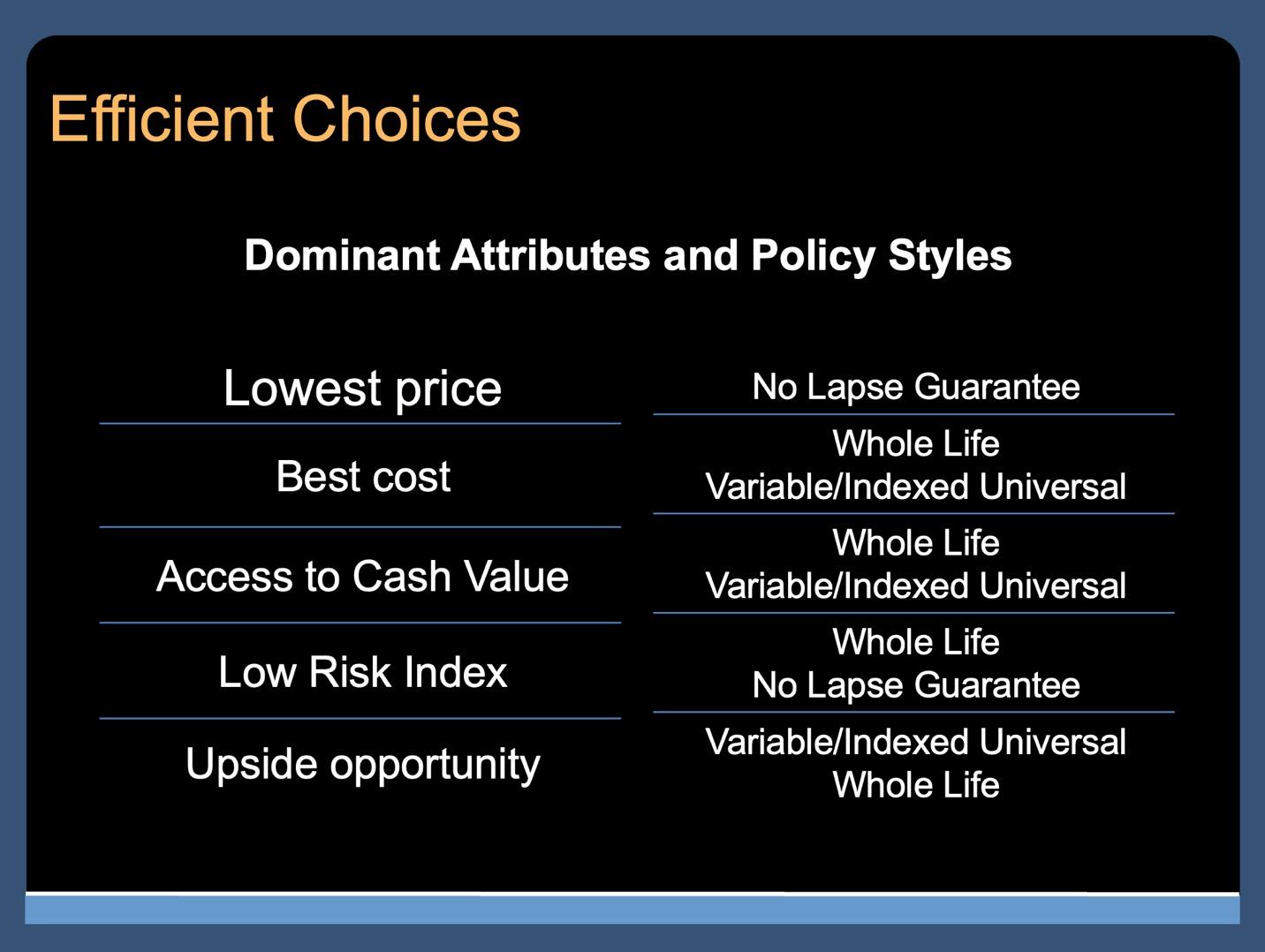
Readers probably don’t see much “portfolioization” yet in the marketplace, but I suggest it may be an important dif ferentiator when you consider: if an asset allocation calls for diversification be tween different asset classes for the longterm health of an investment portfolio, why wouldn’t the same concept apply to assembling different styles of life insur ance policies?
We have diverse policy styles that are uncorrelated to the stock market (whole life, term and no-lapse products) as well as the popular IUL and VUL-styles that are directly or indirectly driven by the
stock market.
Consider the conceptual attributes — with strengths and weaknesses — of to day’s different styles of policies:
» We know we are naturally drawn to the lowest premium, while at the same time we seek guarantees; these are often incompat ible expectations.
» What if death benefits are worth less (due to inflation) over a long life expectan cy? Within some UL products, the buyer can incorporate an increasing death ben efit option — but with the peril of leaving it in effect for too long — when the cost of insurance expenses can become so high as to force a lapse before death.
» Does the client need access to policy cash values? Or does the client need natu ral increases in the death benefit, as exists with participating policies and paid-up additions?
» Should there be a mix of equities and fixed assets driving the cash value — and therefore the likely sustainability of the policy — for the policy’s financial health.
These are largely incompatible ob jectives; not all can be derived from just one style of policy. But they can be achieved with a custom-proportioned use of an appropriate array of policies such as whole life, VUL, IUL and NLG
with their respective and partially over lapping attributes.
By understanding the client’s overall risk tolerance — and assuming that tolerance would also be relevant to a portfolio of pol icies — consider the degree of “price ori entation” versus “value orientation” a client might have with regard to a potential port folio of insurance policies.
For the following example, let’s as sume a client’s risk level of 7.5 — the middle of the extremes between ultra conservative and very aggressive invest ing. Looking at Matrix 1 and finding the 7.5 risk index tolerance factor on the left side of the chart, you can see the poten tial risk-driven proportion of no whole life, 50% NLG, and 50% VUL or IUL. This is the starting point for considering a portfolio through the client’s lens of singularly price-focused concerns.
Matrix 1 shows three highlighted “portfolio” allocations that can be a use ful starting place to find a price-focused portfolio of policies within gradations of moderate risk.
On the other hand, if the client is valuefocused (when the client’s primary

consideration is availability and access to policy cash value, as well as the potential for increasing death benefits over time), we would look to Matrix 2 . These three highlighted matrix entries entries maxi mize value — in the second instance, 60% whole life and 40% IUL/VUL — with the additional benefit of conveying a slightly lower risk index of 7.08.
Client’s best interest can be defined as the attitude an agent or planner brings into the client/advisor relationship. The Society of Financial Service Professionals
needed but also can be a differentiating ap proach to serving the client community and attracting more prospects through the con sultative sales approach. It is possible to do the right thing and thrive in the process!
Richard M. Weber, MBA, CLU, AEP (Distinguished), is a 56-year veteran of the life insurance in dustry, having been a successful agent, a home office executive, a software design

How you can put a plan together to boost your success next year.
 By Chris Gandy
By Chris Gandy
Iwant to push you to do the 1% extra that not only helps you finish 2022 strong, but also helps you start 2023 even stronger. I call myself a recov ering athlete who is now in finan cial services, but the lessons I’ve learned through playing basketball are invaluable — the biggest lesson being that a growth mindset fully committed to continuous improvement is everything. And I’m going to tell you the bottom line first — commitment isn’t convenient. Let’s talk about what commitment looks like and how you can put a plan together to accel erate your success this year.
It starts with practice coupled with self-confidence. One of my coaches used to say, “Practice makes perfect practice.” This means that repetition is needed to build muscle memory (and not just bodily mus cle, but mental muscle) so that you have the self-confidence, mental stamina and focus to walk into any situation and play through it.
The more you practice, the greater your self-confidence. The greater your self-con fidence, the more you want to perform and see what you can achieve. And most im portant, the greater your self-confidence, the stronger your inner will and inner voice are to keep you focused on your goals so that you can ignore all the naysayers who always will surround you.
Financial services is a social industry, and it’s easy to compare yourself to oth ers. This is why it’s critical to surround yourself with teams of people who have the same goals and play by the same rules as you do. There always will be people tell ing you that you aren’t doing well enough to make it in the business, or that you gave it a shot and it didn’t work out so you should try another profession.
If you looked at my basketball statis tics, you’d understand why a lot of people
thought I should quit basketball. Just over 7% of all high school athletes will go on to play in college. If we look at Division I men’s basketball, that percentage drops to 0.9%. That’s just college — think about the odds of getting to the pros! Let’s agree then that you can’t succeed by fo cusing on popular opinion — you must develop the inner resolve to focus on your everyday practice because this, and only this, will drive the results you seek.
December is like the final four minutes of thefourthquarterinbasketball.It’swhere all the year’s practice comes to fruition. It’s the ability to hit the free throws con- sistently under intense pressure because you’ve put in the work all year. Now is not the time to let up. December is the time to double down, just like you would do in the final minutes of any game. You need to commit to playing through to the buzzer. And then you need the commit- ment to know that 2022 is over and 2023 is a whole new game that you can under- take with a fresh per spective, but now you have all that mus cle memory that you built up in December supporting you.
I would even say that how you work in December completely foretells how you will to go into January. If you optimize your work efforts in December, January will be exciting and you’ll look forward to getting back to it. If you just undertake convenient work in December, January will be twice as hard.
Proven techniques for performance abound in our industry. But here are the five things that I do to make my practice perfect: 1) I don’t think of my organization as an insurance agency, I think of my organi zation as my business that sells insurance products. This allows me to keep a distance between myself as the founding player and the business, which is a team that has its own needs. This distance gives me objectivity so I can clearly see what is needed in December and January to elevate our outcomes and
accelerate growth.
2) Morning time is my time. It’s my time for person al development before I give my time to the business. I work out every single morning, whether it’s dark out, cold out, raining out, snowing out — none of this can matter. I am com mitted to me, and my team needs the best version of me to show up.
3) Even though I’m the founder and the ultimate coach of the business, I’m still fo cused on being a teammate. Every one of our advisors who works with my organi zation knows that they’re supported, and I’m working just as hard to improve them as I’m working to improve myself and our collective futures. This type of teamwork is infectious, and advisors consistently outperform what they originally think they could do. This creates a perpetual positive feedback loop and unleashes pos itive energy.
4) I still need a coach — especially in the final minutes of a game where strategy is everything. I joined NAIFA long ago. I sought out mentors and advisors, and I still go to them to bounce ideas in order to keep me inspired and to share best practices. Everyone needs coaches, and their value is the most obvious when the pressure is on.
5) Appreciate the journey while paying it forward to others. December is a natural time for reflection, so take a few moments. Assess your performance, give yourself credit for your growth, and visualize how the more you achieve the more you can give back to others. If you focus on cou pling your success with others’ success, you will not only finish December strong, you’ll also burst into January ready to blow your pre vious stats away.
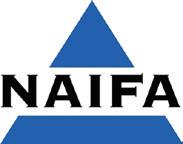
Chris Gandy, LACP, is the founder of Midwest Legacy Group in Lisle, Ill. He serves on NAIFA’s Board of Trustees and is NAIFA’s 2022 Diversity Champion. He may be contacted at chris.gandy@inn feedback.com.
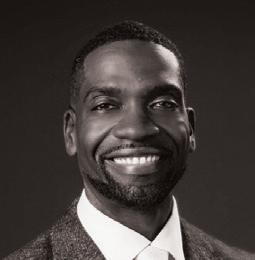


An investor may have many rea sons for choosing whether to buy a deferred annuity when it’s offered. For example, some investors purchase annuities to generate lifetime-guaranteed income, others to accumulate assets and others to protect their principal. Non-buyers may refrain from purchasing deferred annuities of fered to them because of fundamental objections to the product or feeling that their financial situation does not require a deferred annuity.
Recent LIMRA research shows clients’ financial advisors are also critically im portant to these purchase decisions. The specific actions taken by advisors can help or harm their probability of clos ing an annuity sale. Moreover, clients’ experiences working with their advisors when discussing deferred annuities have important ramifications for the advisors’ practices’ future success.
LIMRA surveyed more than 900 inves tors, all of whom were aged 45 to 80, had household investable assets of $100,000 or more, and had met with their advisors within the past three years and discussed deferred annuities. Participants were asked to assess their advisors’ perfor mance during these interactions. Across a range of measures, investors who decided to buy deferred annuities rated their advi sors more favorably than non-buyers did.

Advisors who listened to their clients and ensured they understood the annuity products, demonstrated strong annuity knowledge themselves, and made recom mendations perceived as being in the best interests of their clients tended to have a better chance at completing a sale.
In addition, buyers were significantly
Source: Advisors and the Annuity Discussion. LIMRA. 2022
*Went beyond expectations” = scores of 8 or 9 on a 1 to 9 scale (with 9 being “Went beyond expectations” and 1 being “Did not meet expectations”)
more likely than non-buyers to be satisfied with their advisors, to be willing to un dergo the same process again if the need arises, and to recommend their advisor to family or friends. As referrals are usually the lifeblood of future business develop ment, it is essential that advisors strive to treat every interaction with clients as an opportunity to demonstrate their value.
Could the advisors of the non-buy ers have done something differently that would have resulted in sales? Yes. Our research shows that most non-buy ers (58%) feel that their advisors could have. According to non-buyers, the top improvement advisors could make is in creased communication. If advisors can provide better explanations of the advan tages and benefits of the deferred annuity product, the product’s fees, how the de ferred annuity would fit into the portfo lio, and the differences between deferred annuities and other types of annuities, a sale would be more likely.

Training on deferred annuity products and listening to clients could help more people feel comfortable with investing in these products.
Instructing advisors on the deferred
annuity value proposition and its unique sales process could help increase sales. Having fine-tuned listening skills, espe cially during the needs analysis phase of the sales process, is critical. More education to help advisors understand how deferred annuities fit into formal retirement plans for managing income, expenses and assets in retirement would also be valuable.
Advisors should also be prepared to meet clients at their level of understand ing about deferred annuities, which is likely to come from a variety of informa tion sources beyond the advisor. They need to acknowledge that some clients will come into the meeting with their own (perhaps strongly felt) ideas about annuities based on the resources they have consulted. Being able to address a wide range of common objections will be essential for success.
Matthew Drinkwater is corporate vice presi dent, annuities and re tirement income, LIMRA. He may be contacted at matthew.drinkwater@ innfeedback.com.

The specific actions taken by advisors can help or harm their probability of closing an annuity sale.





